The Most Amazing Fact About Every State Flag
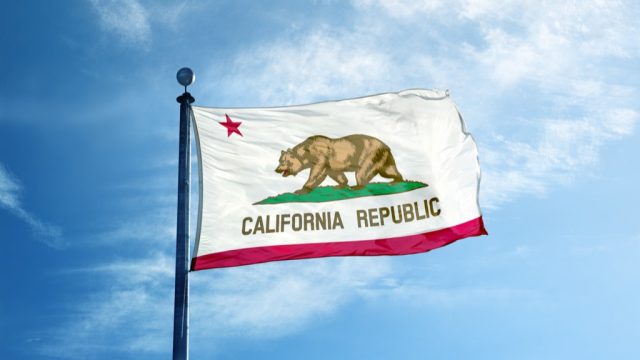
Just a year after our Founding Fathers signed the Declaration of Independence, the newly-formed United States adopted a single symbol that would unite the country in its infancy: the American flag. From then on, it was each state’s turn to create its own flag, some of which have changed over time. So, in celebration of Flag Day—which is on June 14th annually—we’ve rounded up the most interesting facts about each state flag in America. Get ready to find out which state flag has a little bit of U.K. in it, which flag isn’t rectangular, and what all those colors in Colorado’s iconic banner stand for.
1
Alabama
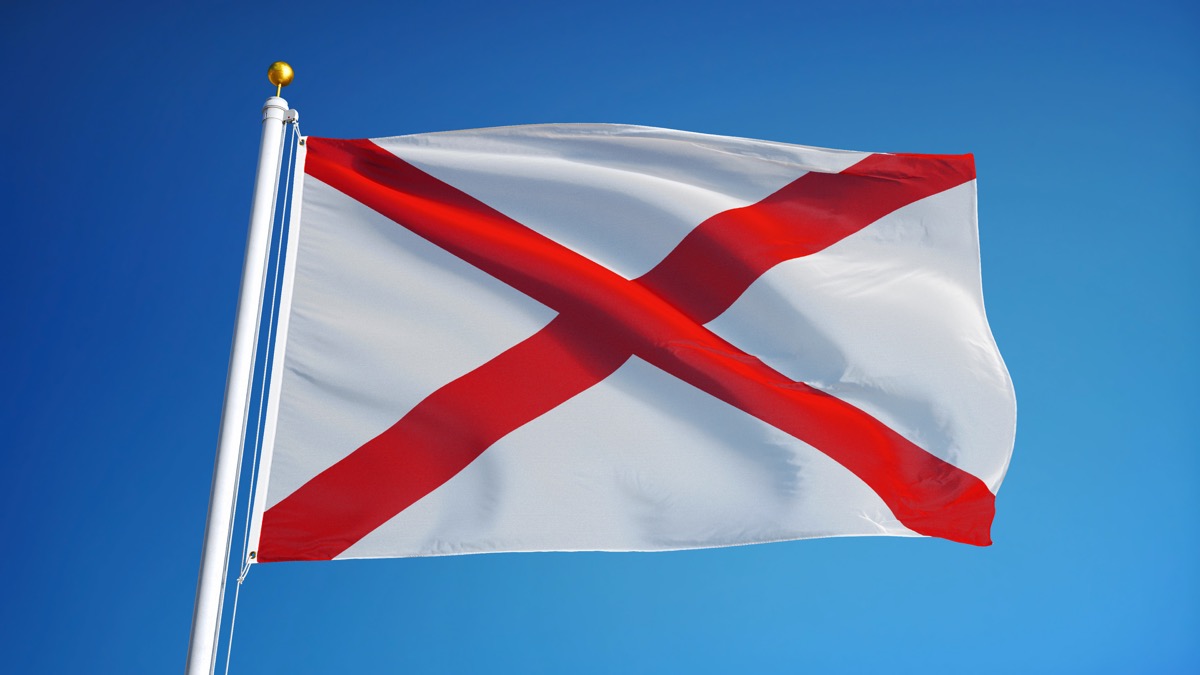
Similar to other former members of the Confederacy, Alabama’s state flag was modeled after a Civil War battle flag (specifically, the flag of the 60th Alabama Infantry Regiment). The emblem was adopted in 1895—and the timing was no accident. “The flag changes in Mississippi, Alabama, and Florida coincided with the passage of formal Jim Crow segregation laws throughout the South,” wrote historian John M. Coski in his book The Confederate Battle Flag. In other words, the flag—known as the crimson cross—is a reminder of the racism that’s plagued America since it was founded.
2
Alaska
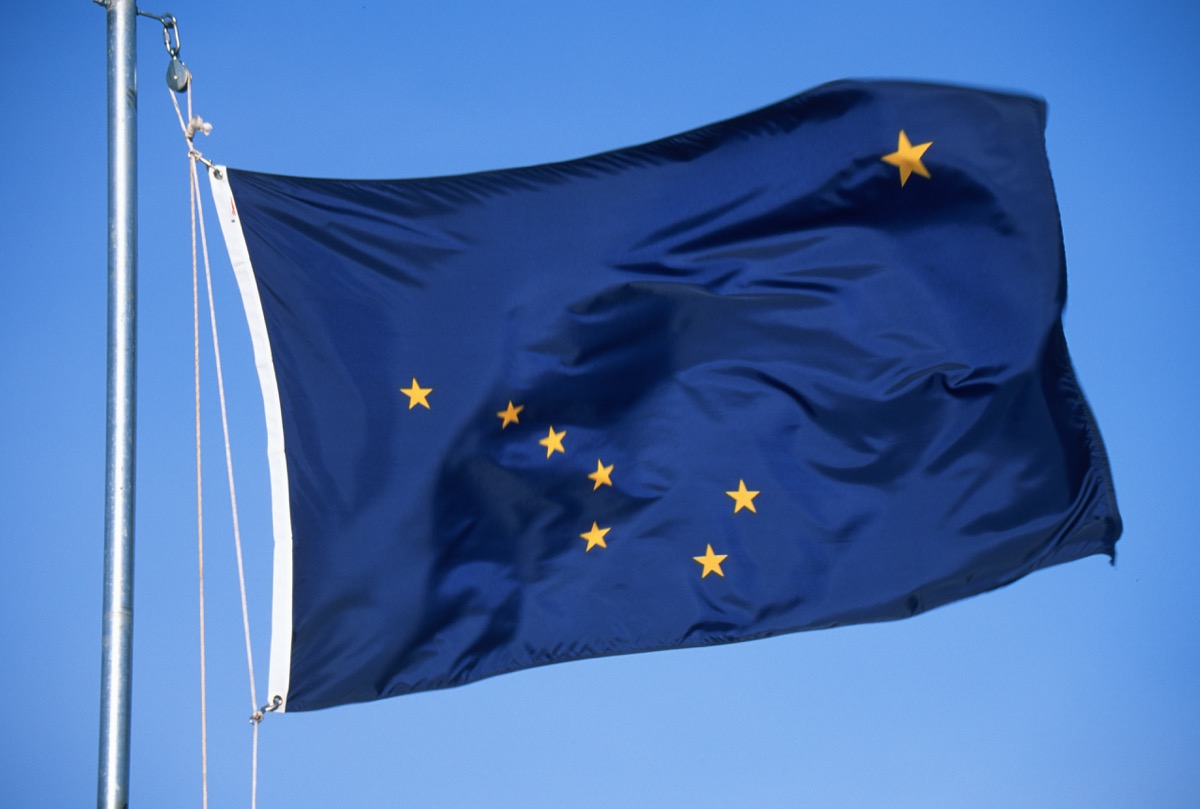
In 1927, more than 30 years before Alaska became a state, the Alaska Department of the American Legion held a flag design contest for Alaskan children, grades 7 through 12. The winner of the contest was Benny Benson, a 13-year-old who was living in an orphanage at the time.
According to the Alaska Historical Society, Benson was awarded an engraved watch and a $1,000 scholarship that he used to study diesel mechanics. In 1959, his design—which consists of eight gold stars that form the Bigger Dipper and Polaris—became the official state flag.
3
Arizona
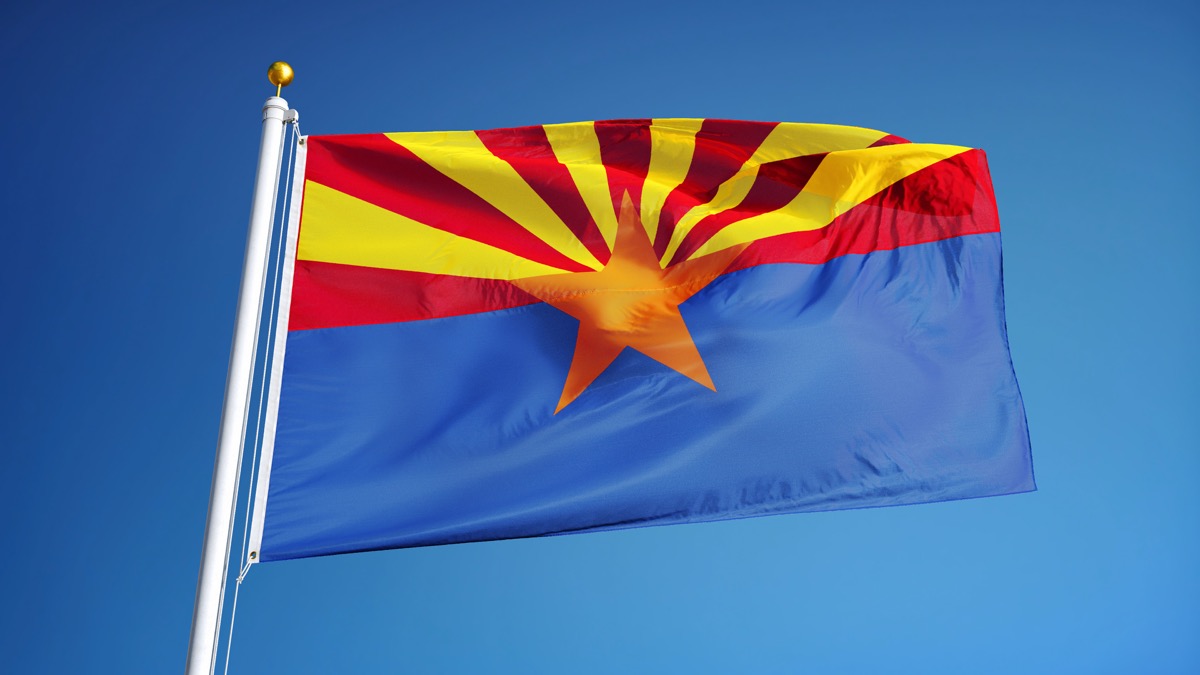
According to the Arizona State Library, the star on Arizona’s state flag represents the state’s power as the largest producer of copper in the United States.
4
Arkansas
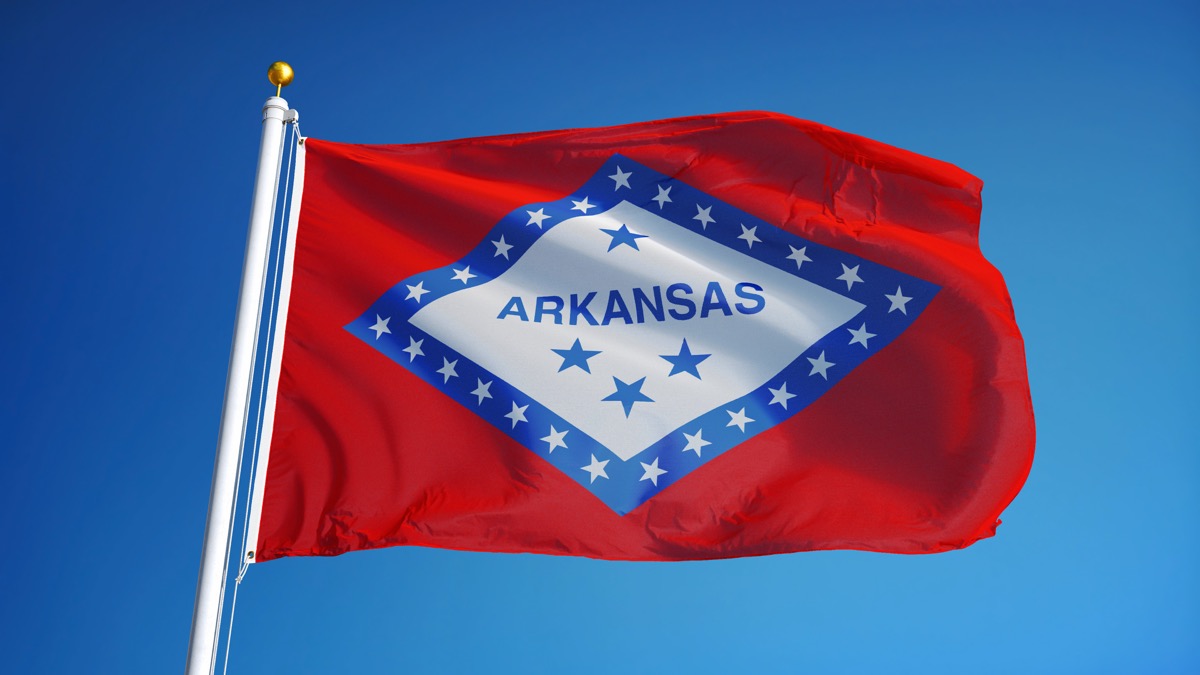
The three stars underneath the word “Arkansas” on this state flag represent three facts about the state, according to Arkansas Secretary of State John Thurston. The first star represents the fact that Arkansas has belonged to three nations (France, Spain, and the United States). The second represents that the state was acquired through the Louisiana Purchase in 1803. And the third represents that Arkansas was the third state created from the Louisiana Purchase, after Louisiana and Missouri. The blue-and-white diamond star border evokes the Confederate battle flag, making Arkansas as the second of America’s 50 states to include a nod to this racist chapter in U.S. history in its banner.
5
California
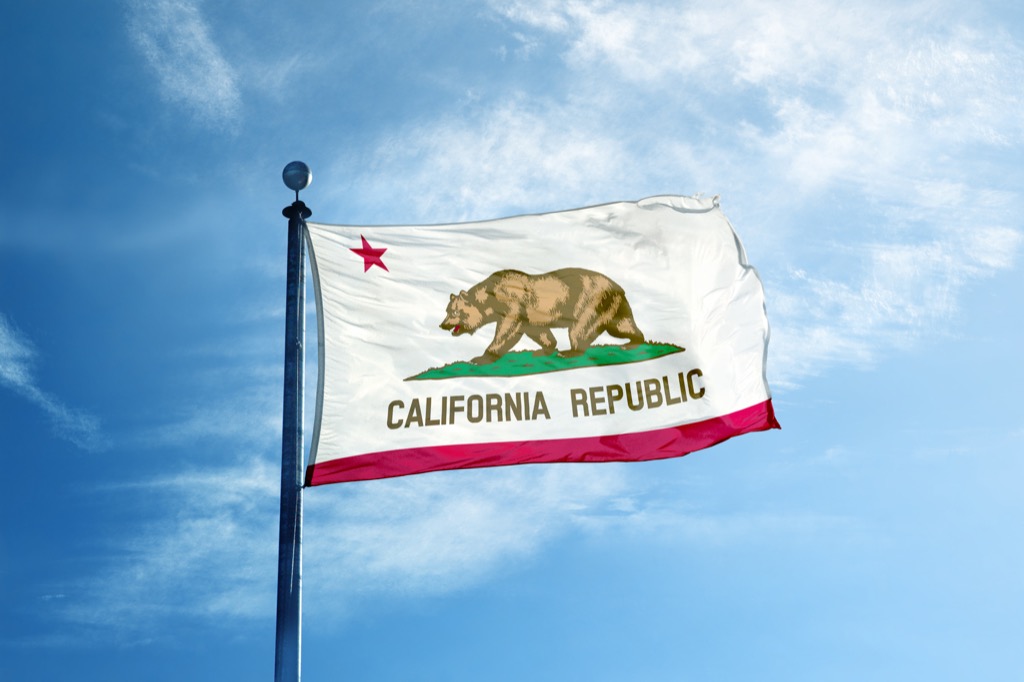
Before California became an official state, it was controlled by Mexico. But as more and more Americans began to settle there around 1846, they decided to rebel against the country in an effort to become an independent republic and ultimately join the union. When they did that, they raised the Bear Flag, a precursor to California’s current state flag. The rebellion (along with the Mexican-American War it coincided with) was successful and in 1850, California became an official U.S. state. About 20 years later, the Bear Flag became the official flag in 1911, as per the History Channel.
And, according to Southern California Public Radio, there’s a sad but intriguing story behind the grizzly bear depicted on California’s state flag. In 1889, publishing tycoon William Randolph Hearst decided that he wanted to bring a live grizzly bear to San Francisco—and so he had a journalist capture Monarch, the bear depicted on the banner.
6
Colorado
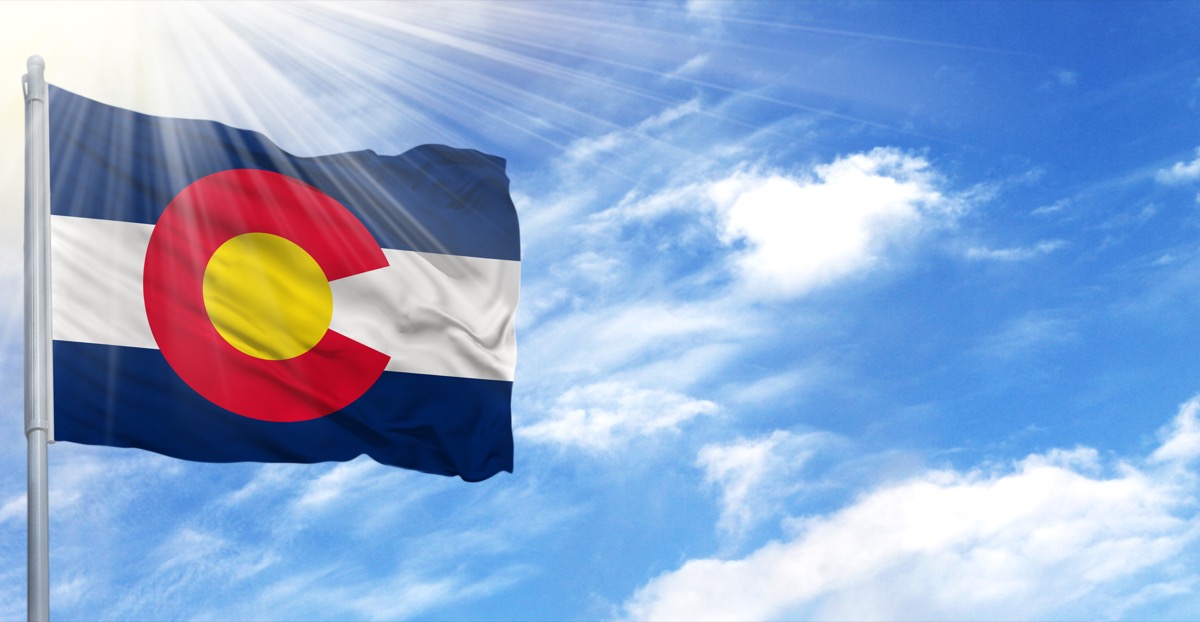
Each aspect of the Colorado flag represents a form of natural beauty you can find within the state, according to the Colorado Department of Personnel and Administration. “The gold stands for the abundant sunshine that our state enjoys,” the website explains. “The white represents the snowcapped mountains while the blue stands for our clear blue skies. The red represents the ruddy color of much of our state’s earth.”
7
Connecticut
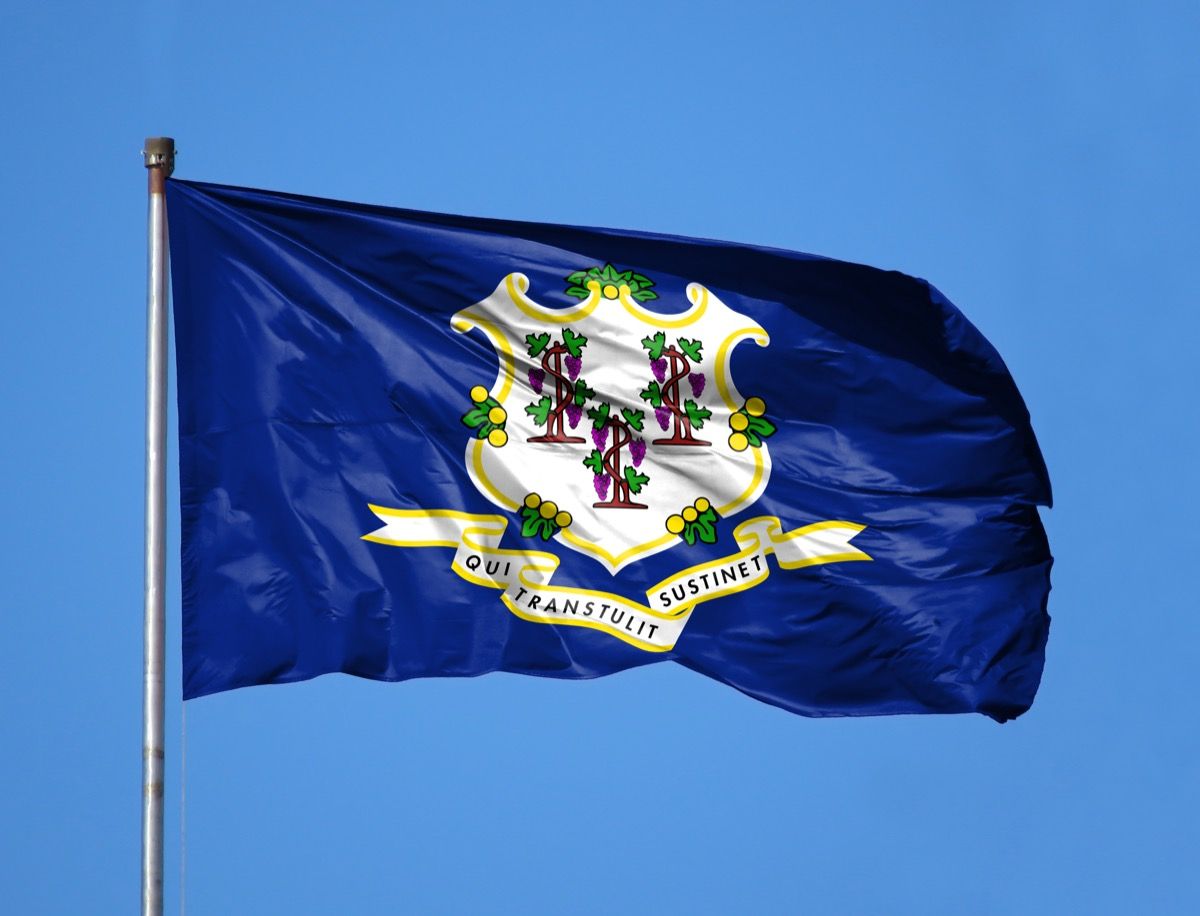
The three grapevines at the center of the Connecticut state flag represent the state’s first English settlers from the 1630s. Specifically, they symbolize its first established towns: Windsor, Wethersfield, and Hartford, according to the State of Connecticut Judicial Branch.
8
Delaware
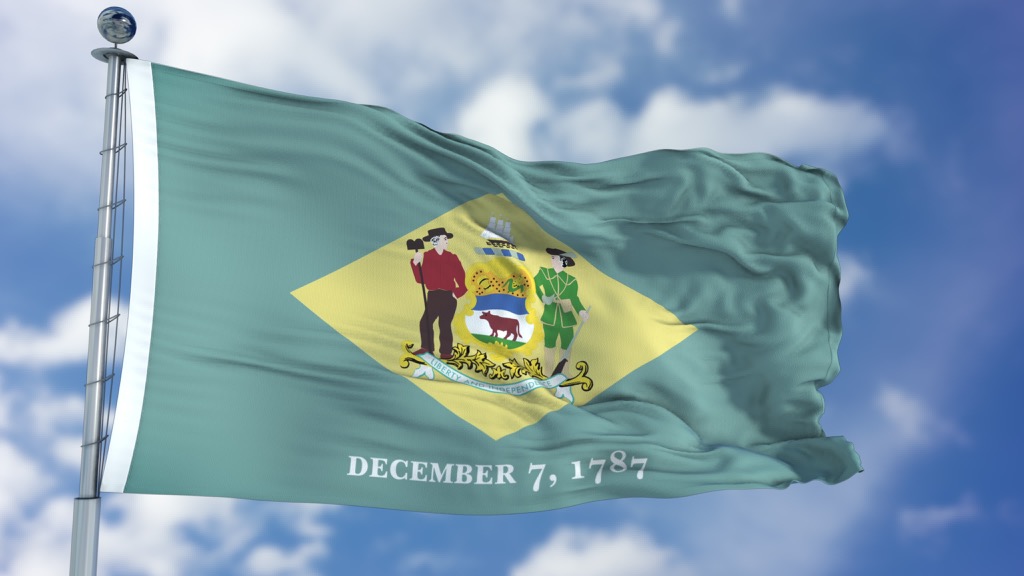
The “colonial blue” and “buff” colors on the Delaware state flag represent the colors George Washington sported during his time as a general in the Continental Army, according to Delaware’s official state website.
9
Florida
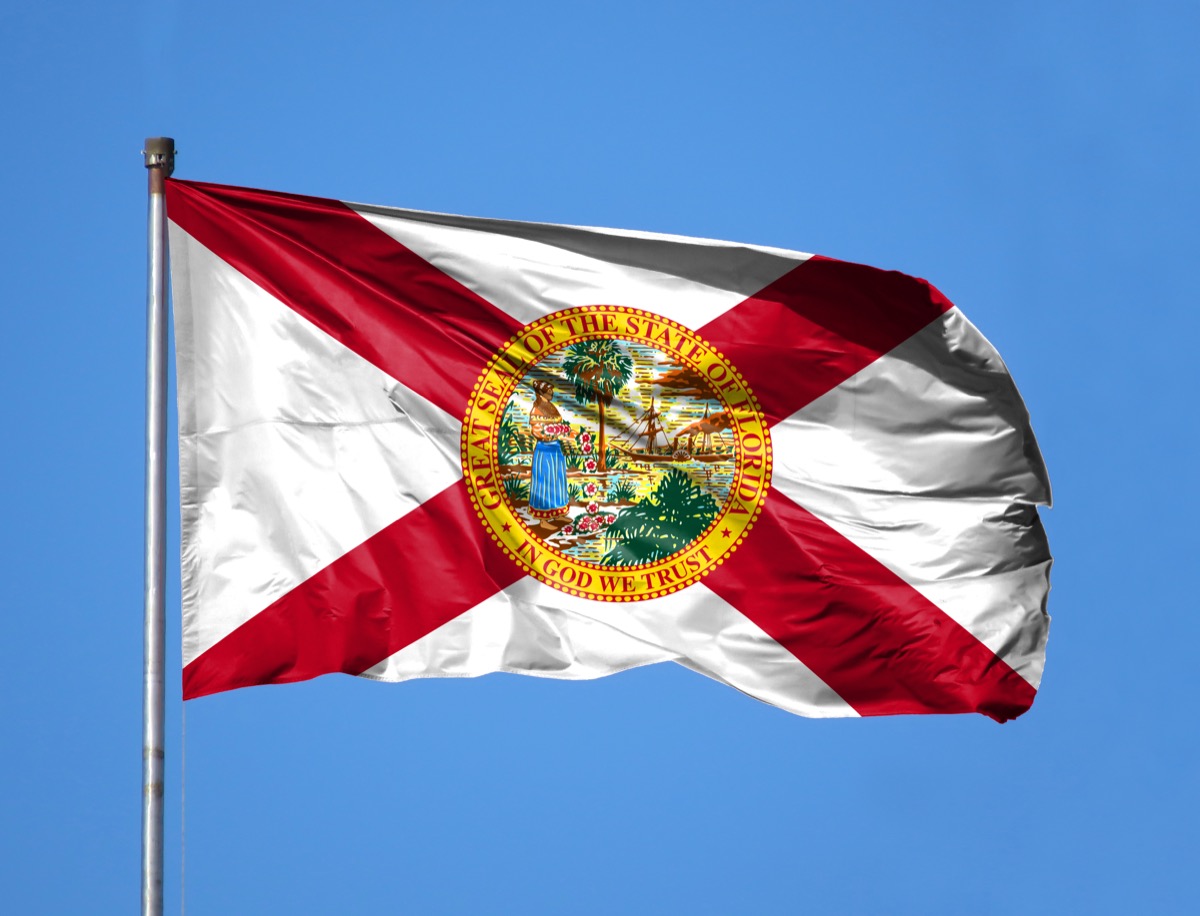
From 1868 to 1900, Florida’s state flag simply consisted of the state seal on a white background. But to some, the flag looked too much like a white flag of surrender. According to the Florida Department of State, Governor Francis P. Fleming, a former Confederate soldier and a fierce segregationist, suggested adding a red cross to the flag to differentiate it from other white flags. While some historians believe the cross was meant to echo the Confederate flag, there’s no specific evidence that’s what was implied, according to an investigation by the Miami Herald.
10
Georgia
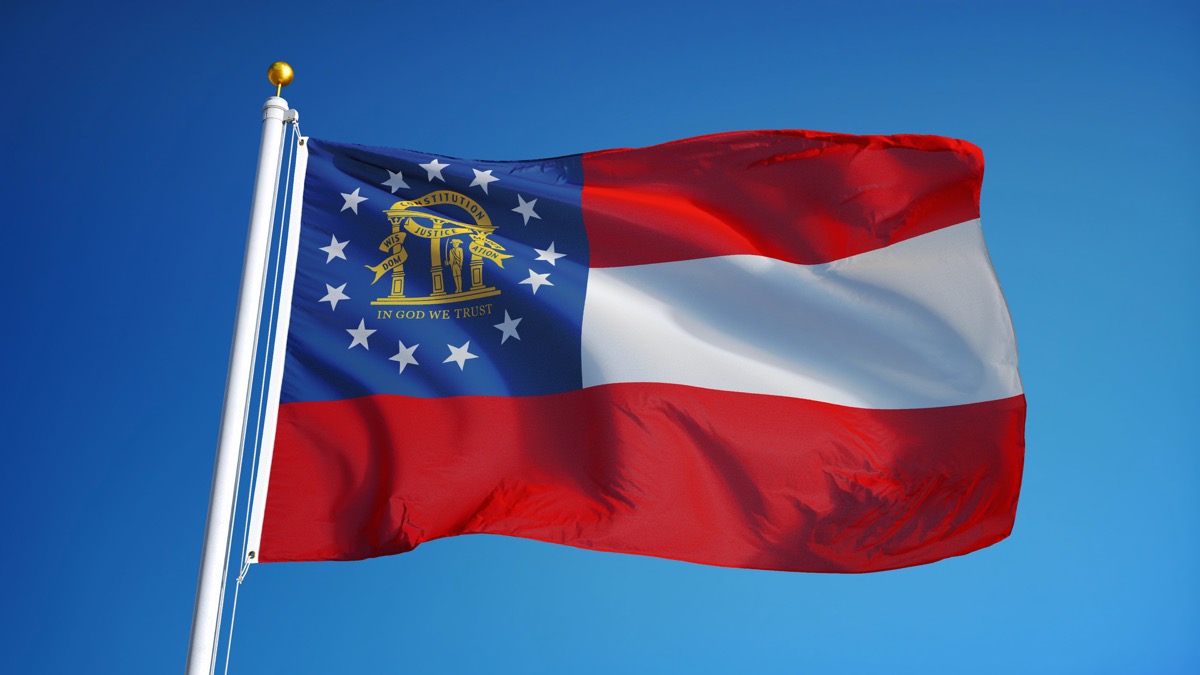
For nearly 50 years, two-thirds of the Georgia state flag was taken up by an image of the Confederate flag. In 2003, it was replaced by a new flag (see here), which includes the state seal, as well as the state motto: “Wisdom, Justice, Moderation.”
11
Hawaii
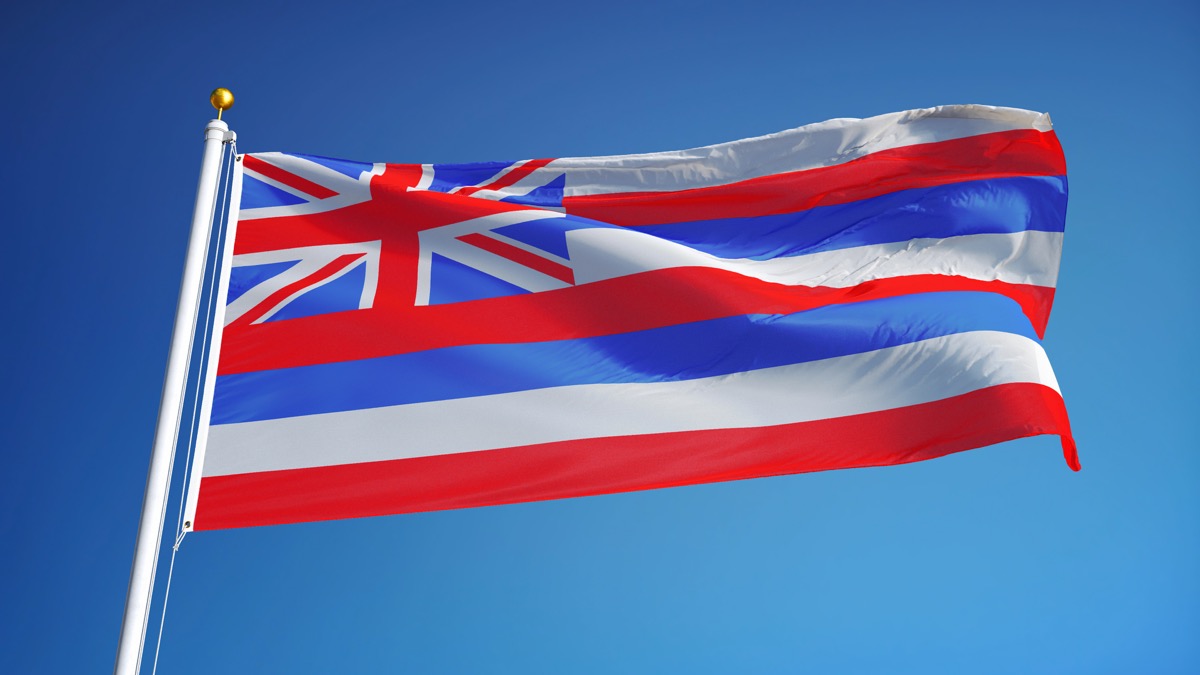
The Hawaiian flag is the only American state flag to incorporate a national symbol from another country (specifically, the Union Jack of the United Kingdom), according to Tim Marshall, author of the book A Flag Worth Dying For. This dates back to 1793, when a British military captain presented the flag to King Kamehameha I of Hawaii as a symbol of friendship. The union flag flew as Hawaii’s only flag until 1816, when the red, white, and blue stripes were added, according to the BBC.
12
Idaho
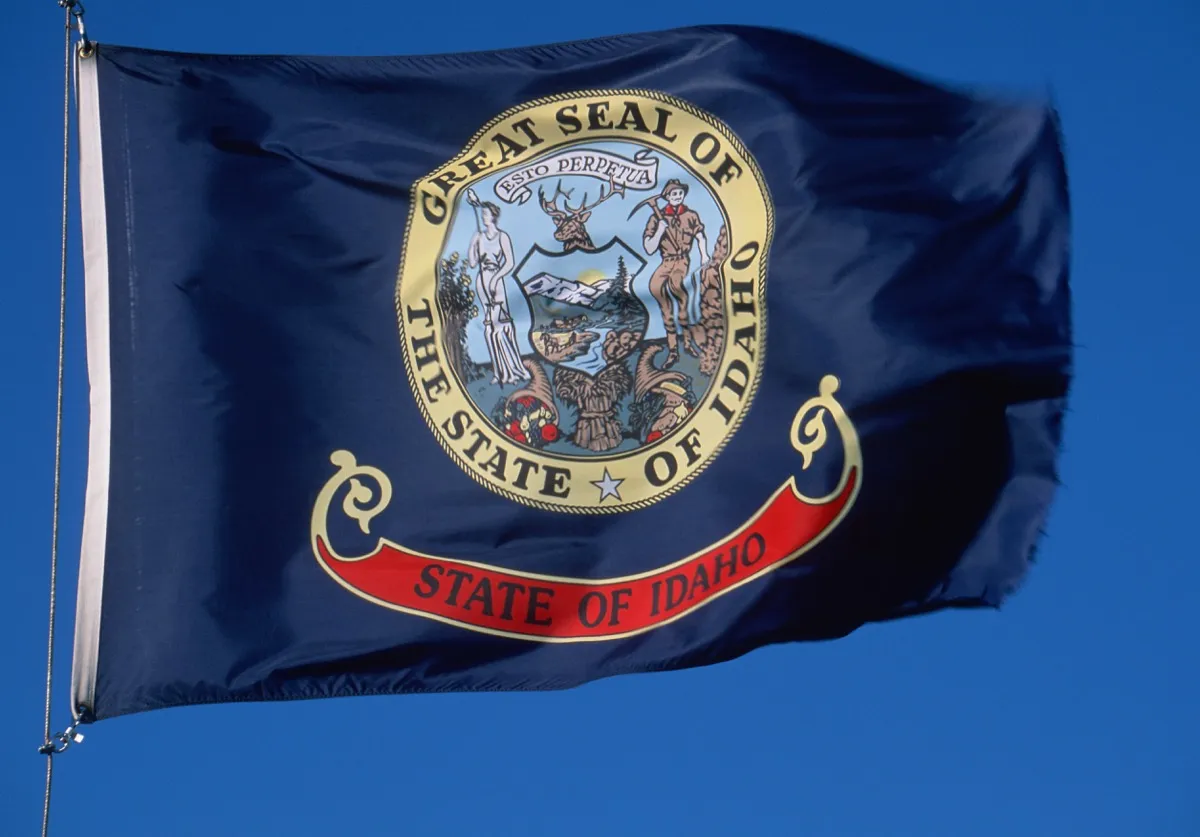
The Idaho state seal, which also appears on its flag, is the only state seal ever to be designed by a woman, according to the Idaho state website. The image was designed by Emma Edwards Green and adopted by Idaho’s first state legislature in 1891.
13
Illinois
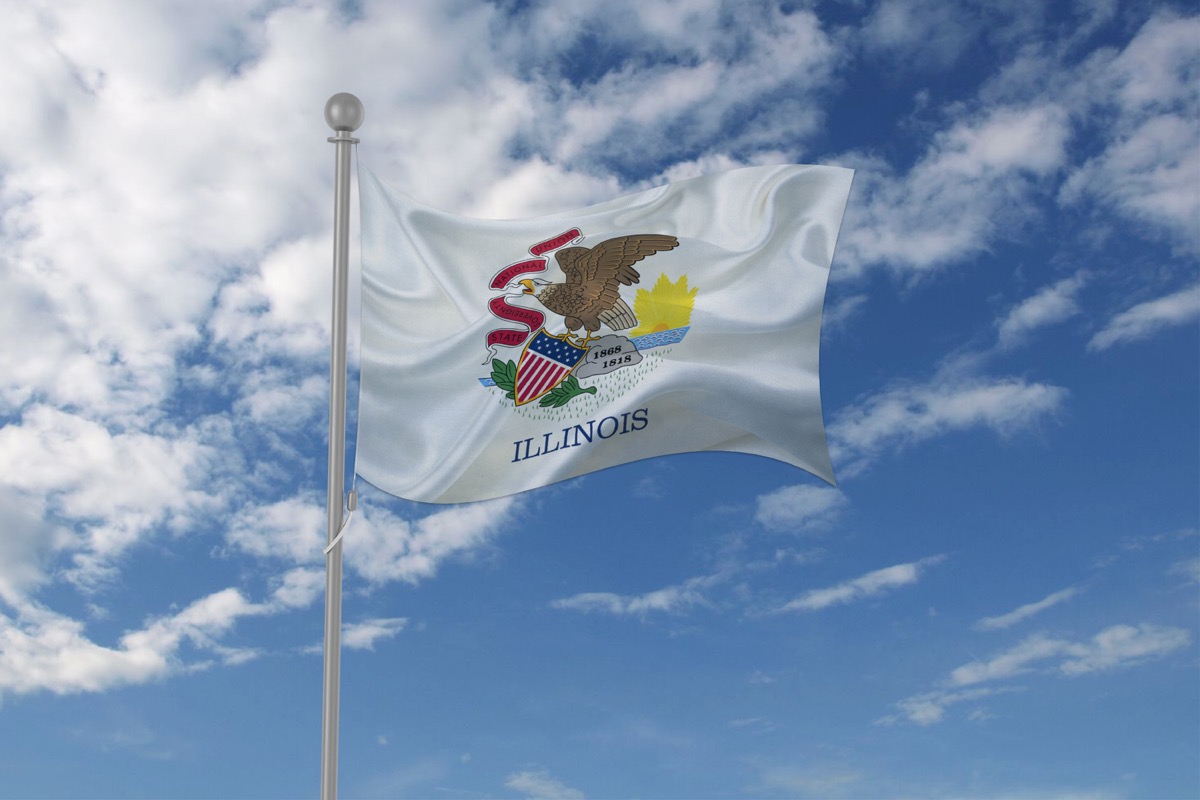
Before the state’s name was added to its flag, some people, including Chief Petty Officer Bruce McDaniel, found the Illinois state flag difficult to identify. While serving in the Vietnam War, McDaniel wrote to State Representative Jack Walker and suggested the flag include the state’s name. In 1969, the flag was officially updated, according to the Illinois Department of Natural Resources.
14
Indiana

The Indiana state flag bears a striking resemblance to the Gotham city flag that appears in 1989’s Batman. Unfortunately, no one who worked on the film has confirmed whether or not the similarities were intentional—though obviously, the state flag came first in 1917.
According to the Indiana state government, “the torch in the center stands for liberty and enlightenment; the rays represent their far-reaching influence.”
15
Iowa
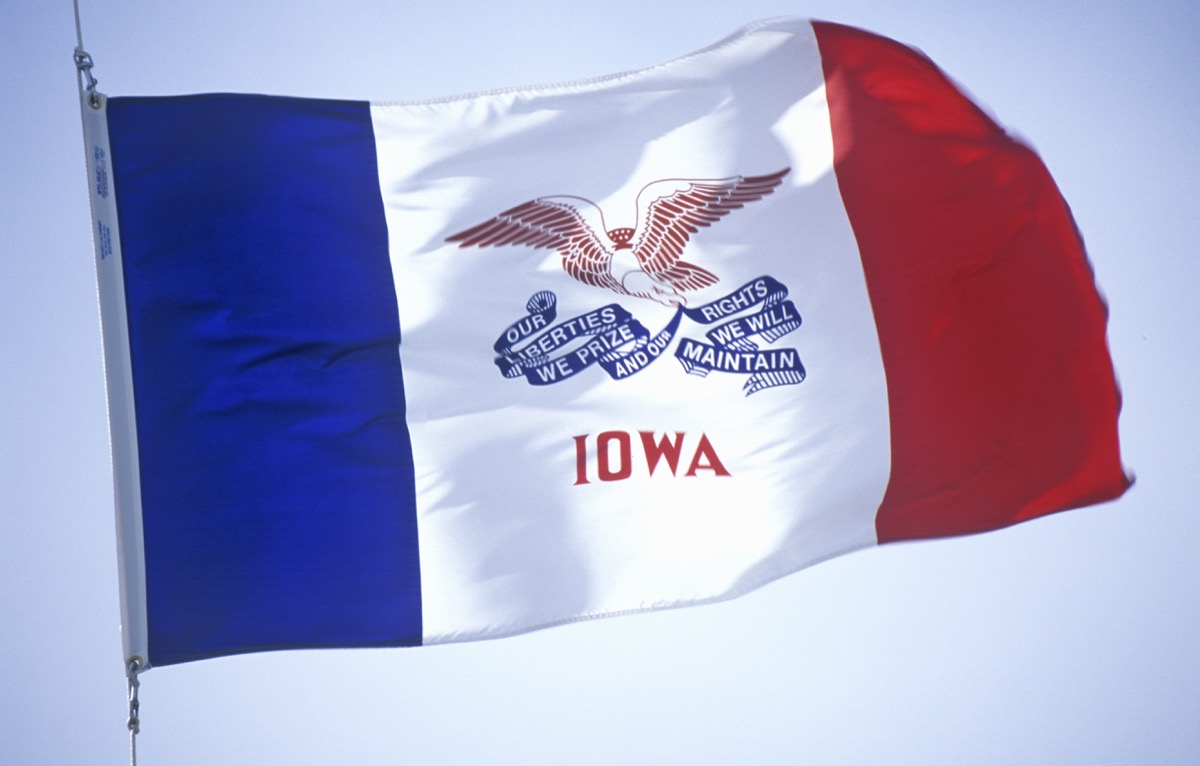
Dixie Cornell Gebhardt, a member of the Daughters of the American Revolution, designed the first Iowa state flag in 1921. She included the colors of the French flag into her design in order to honor Napoleon Bonaparte, who originally controlled Iowa before it was acquired as part of the Louisiana Purchase, according to the Iowa government.
16
Kansas
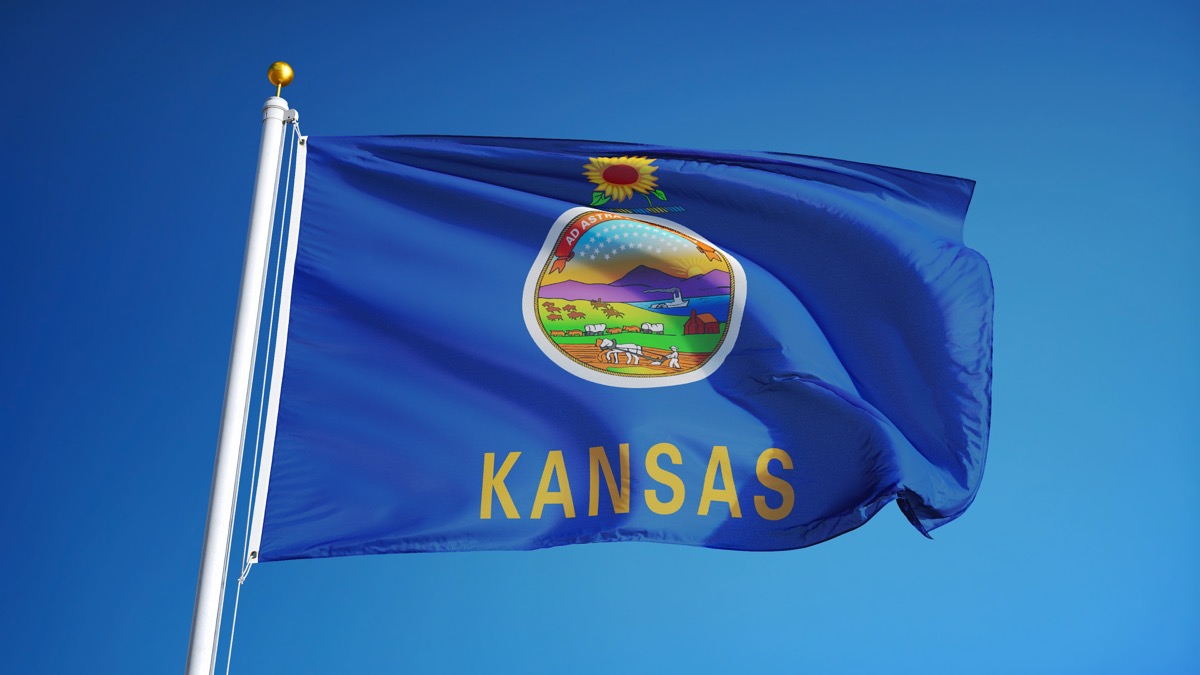
The state seal at the center of the Kansas flag is meant to represent pioneer life in the region. It includes images of a steamboat, a settler’s cabin, a farmer plowing his field, a wagon train, and Native Americans hunting bison, according to the Kansas government.
17
Kentucky
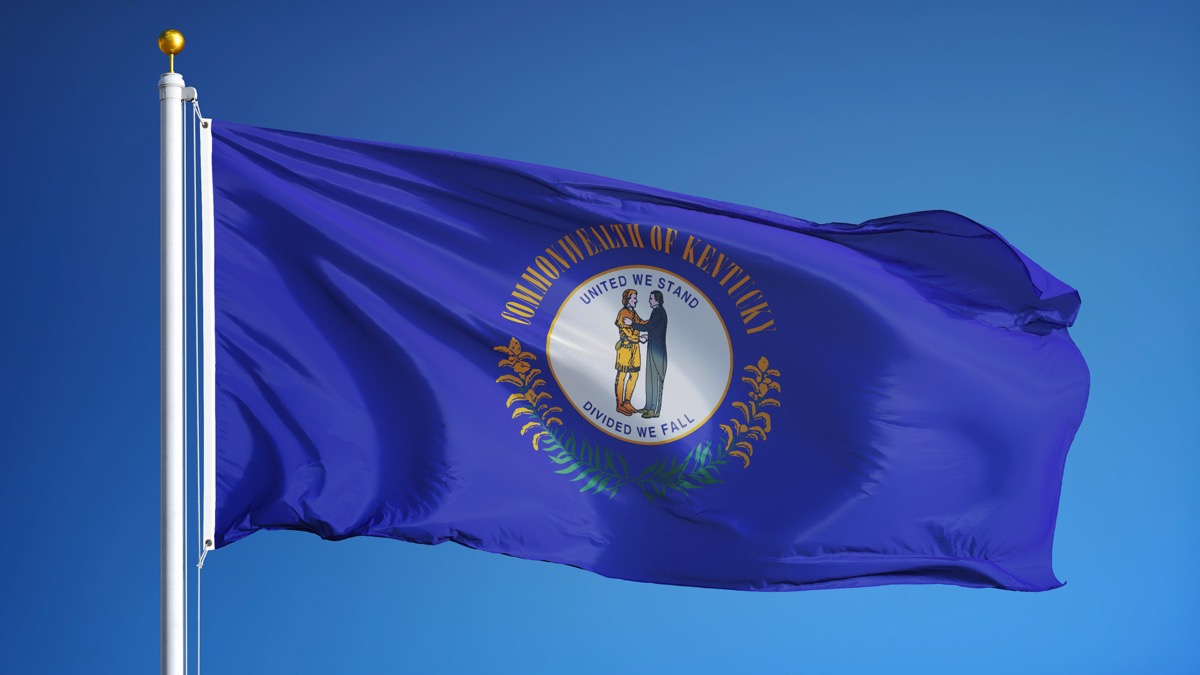
There’s a common misconception that the two men represented on Kentucky’s state flag are Daniel Boone and Henry Clay. But these two figures are actually meant to symbolize the uniting of the first Kentucky frontiersmen and statesmen, according to the Kentucky Historical Society.
18
Louisiana
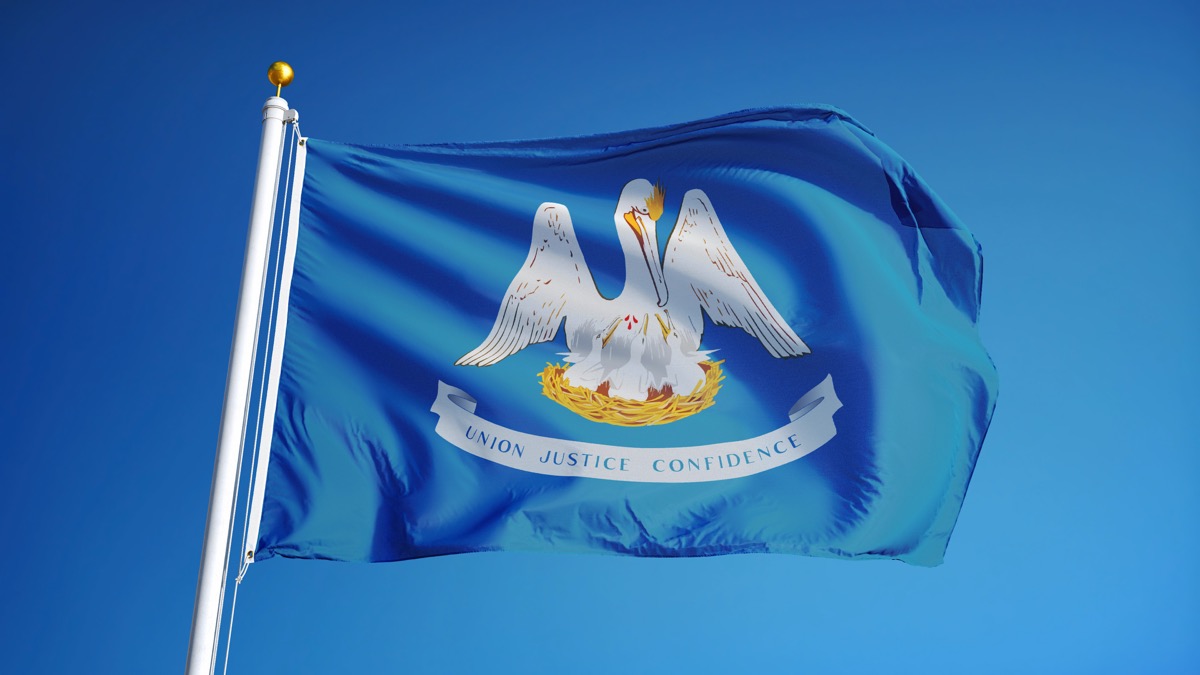
The pelican has been a symbol of Louisiana since its earliest days as an American territory. In fact, the official state bird is the brown pelican. But when it comes to the flag, the three drops of blood coming from the mother bird’s beak represent the far lengths the state is willing to go to in order to protect and provide for its citizens, according to The Advocate.
19
Maine
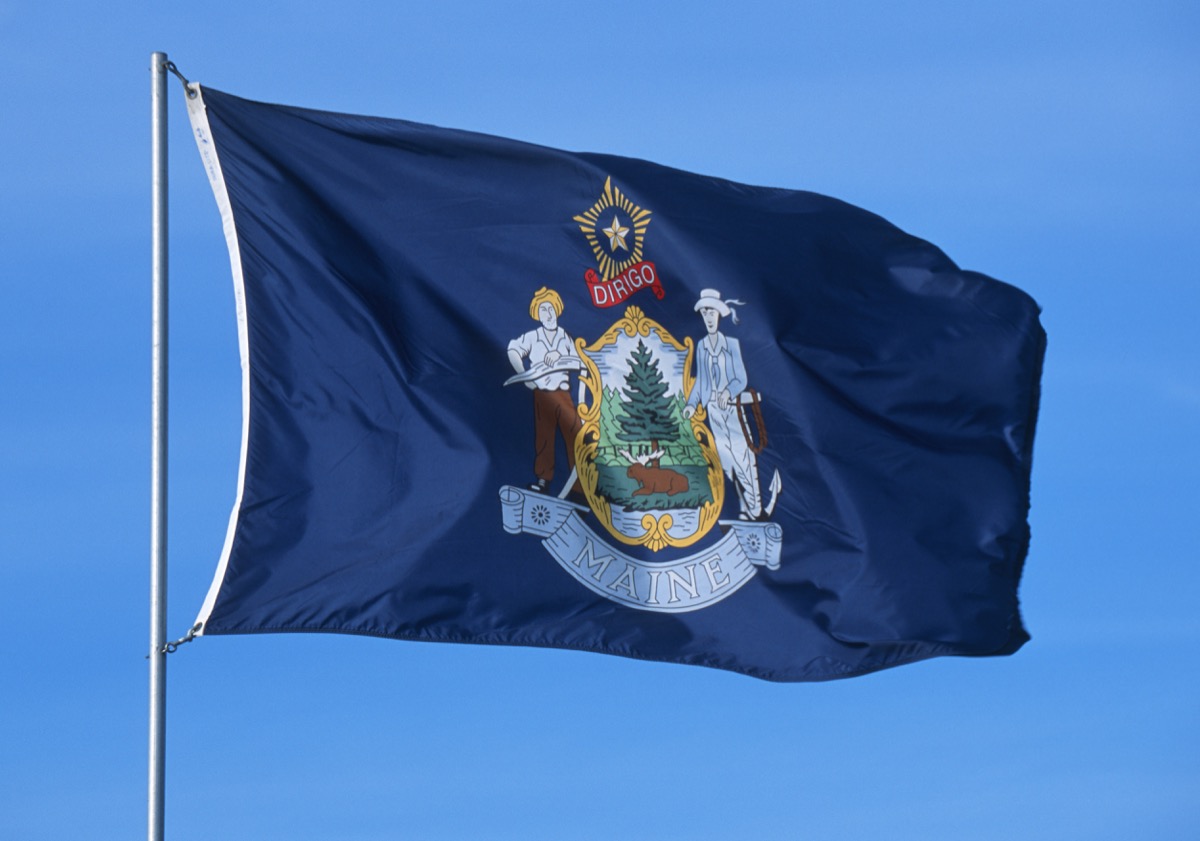
The two men on Maine’s state flag are a farmer and a sailor. According to State Symbols USA, the pair represents the pride that the state of Maine reserves for its strong agricultural and nautical ties.
20
Maryland

The two designs on Maryland’s flag represent important elements of the state’s history. According to the office of Maryland’s secretary of state, the yellow and black design represents the family crest of George Calvert, 1st Baron Baltimore. The white and red design is a nod to the flag that Maryland-born Confederate soldiers flew during the Civil War.
21
Massachusetts
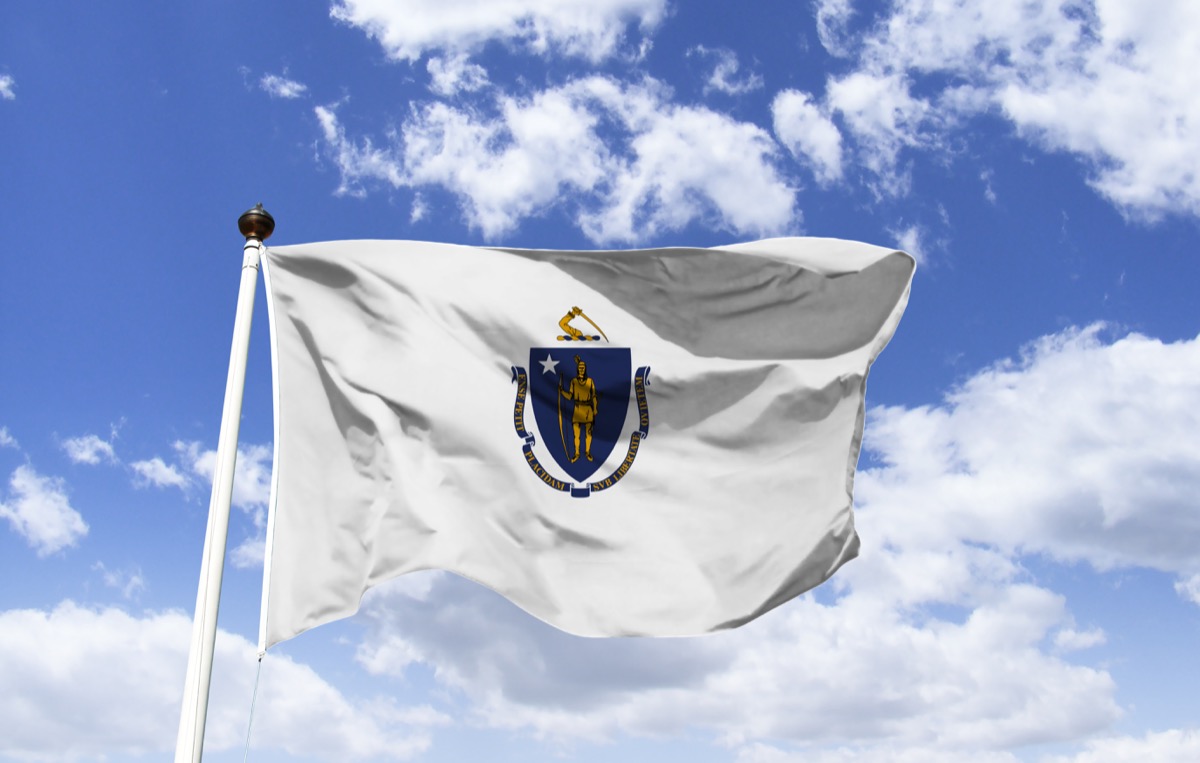
The Massachusetts state flag includes an image of Ousamequin Massasoit, the leader of the Wampanoag tribe who signed the Wampanoag-Pilgrim Treaty in 1621. However, while the image is supposed to be one of peace, many people say the flag is violent and ought to be replaced: If you look closely, you’ll notice Massasoit’s head is under the floating arm of Myles Standish, an early settler known for “protecting” early settlers from Native American attacks. The position of his sword is more threatening than it is peaceful.
22
Michigan
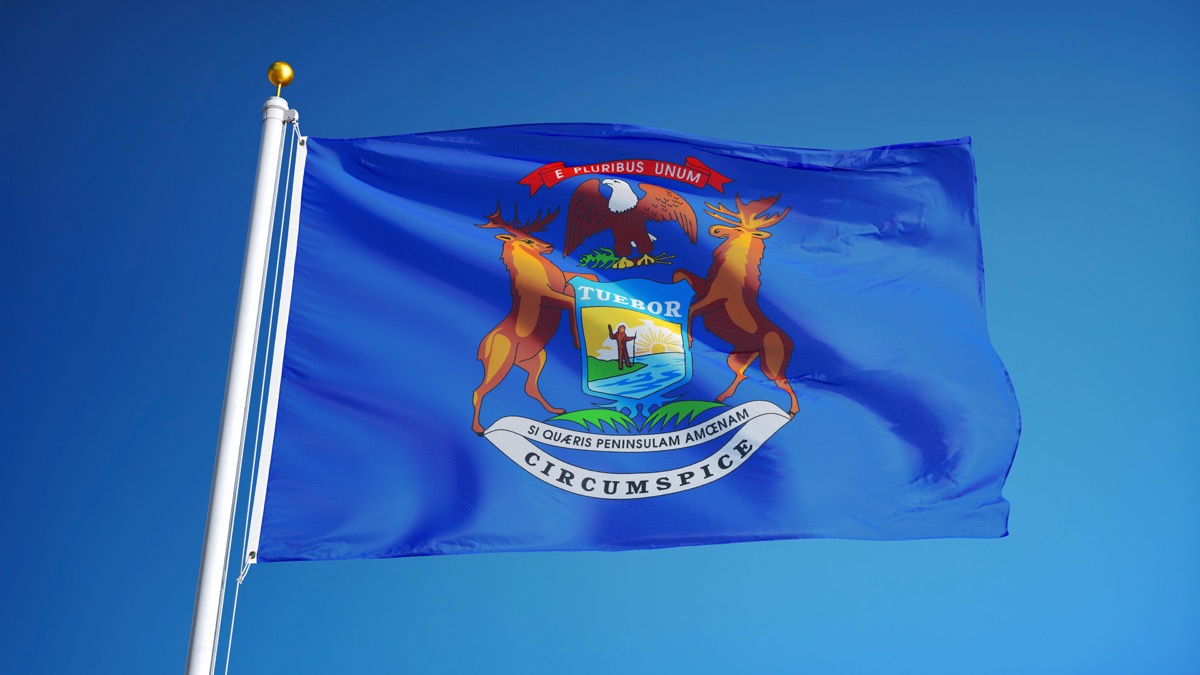
The image on the Michigan flag is simply the state seal, complete with not one, not two, but three mottos: E pluribus unum (From many, one); Tuebor (I will defend), and Si quaeris peninsulam amoenam circumspice (If you seek a pleasant peninsula, look about you).
An additional fun flag-related Michigan fact is that since 1953, the city of Three Oaks has celebrated the American flag with a three-day festival in June called Three Oaks Flag Day. That’s right—this Michigan town adores the country’s flag so much, they created a days-long party, parade included, to celebrate all of its merits.
23
Minnesota
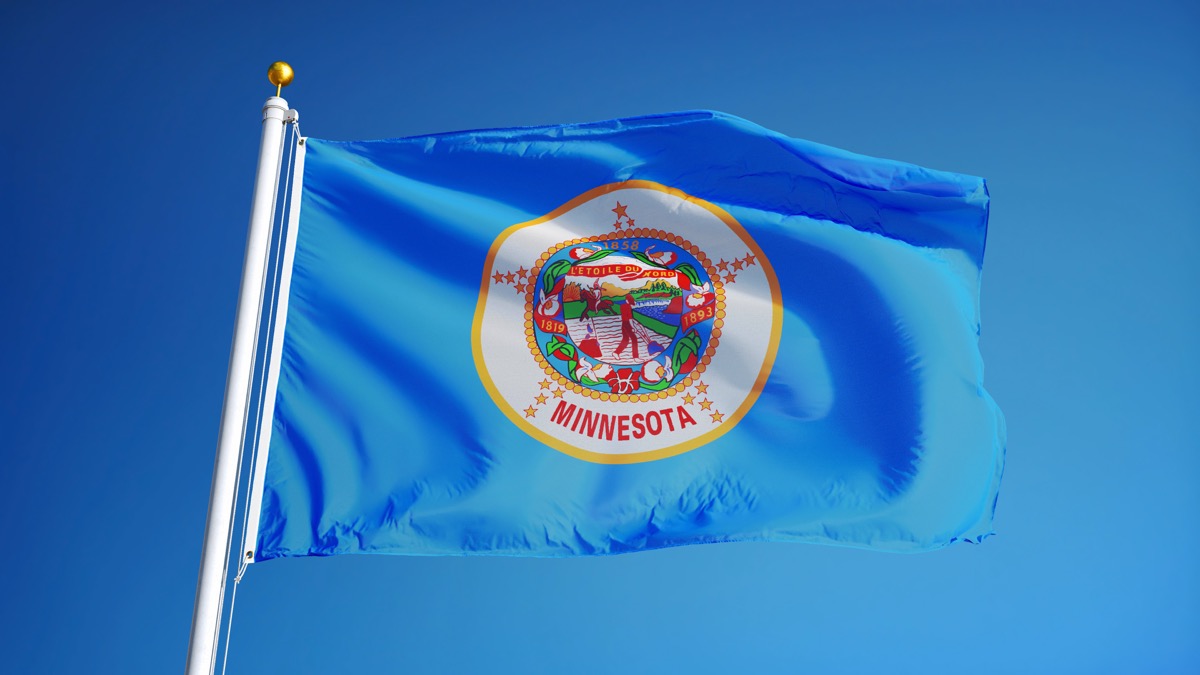
In 2001, the Minnesota state flag was voted one of the top 10 worst state flags by the North American Vexillological Association. The flag is simply a blue background with an image of the state’s seal—which includes a Native American on horseback, a pioneer plowing the land, and a whole lot of other flourishes—but it’s been criticized for being too complex to make out.
24
Mississippi
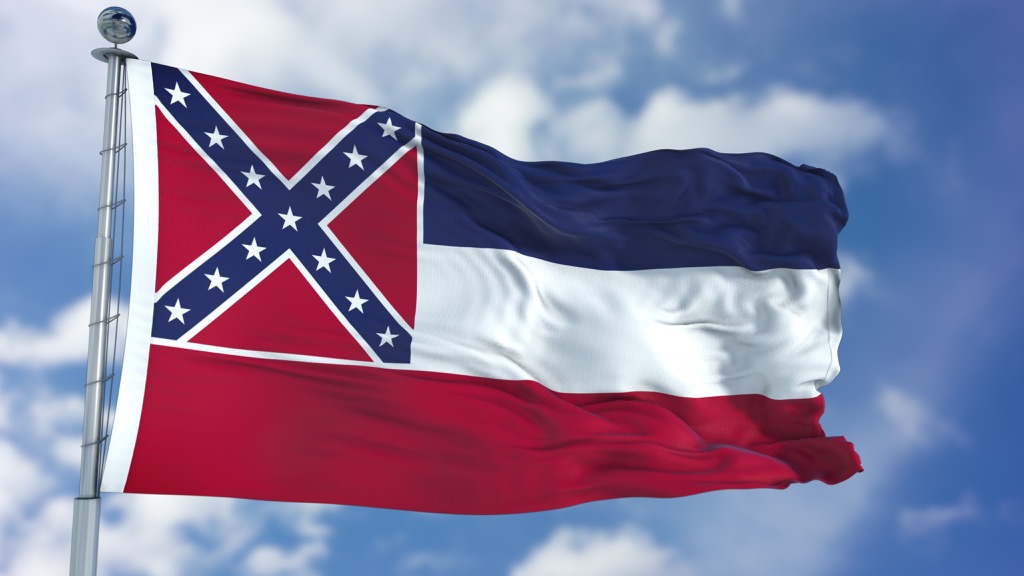
Mississippi is the only state to still include an image of the Confederate flag. In 2001, 65 percent of voters opted to uphold the current design, according to CNN.
25
Missouri
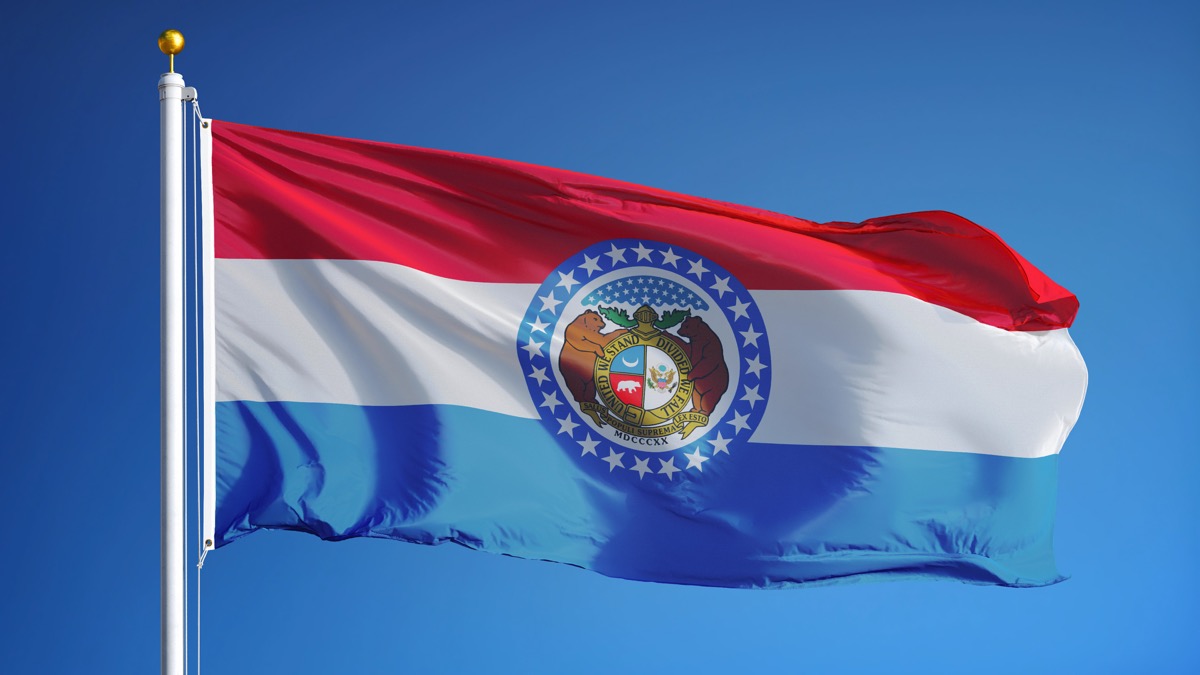
The two grizzly bears on the Missouri state flag stand for courage and strength, while the crescent moon represents the state’s bright future, according to Missouri’s secretary of state.
26
Montana
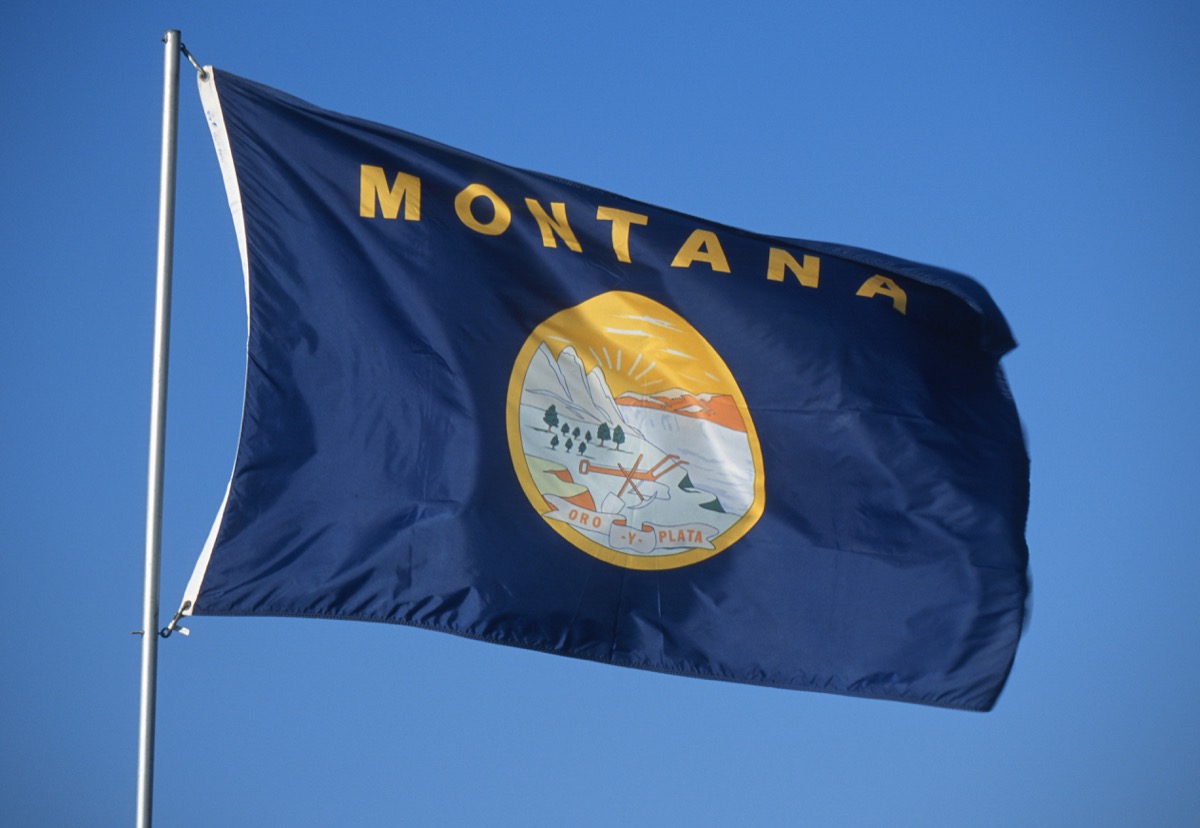
Since the 19th century, Montana has boasted an impressive gold and silver mining industry. That’s the reason for the Spanish phrase at the bottom of its flag: “Oro y Plata” (which means “Gold and Silver”).
27
Nebraska
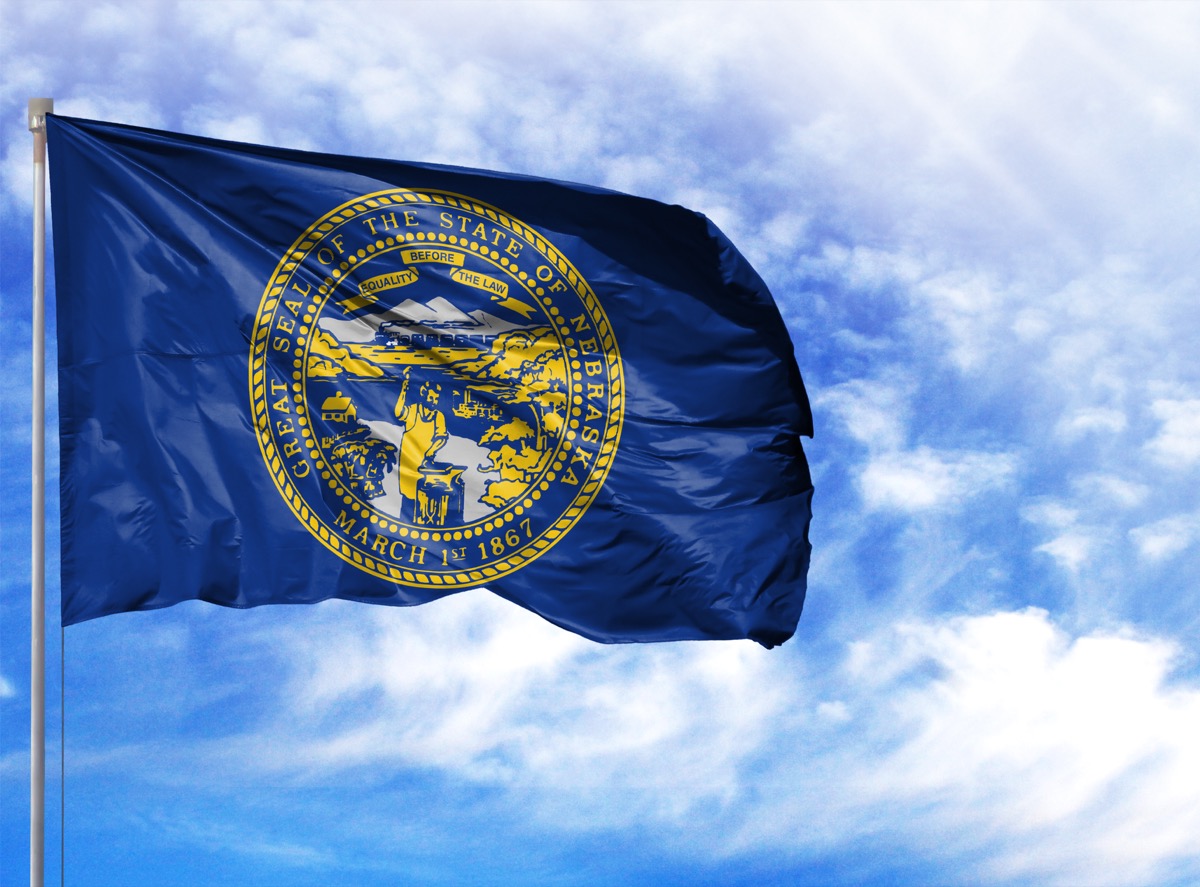
After being voted the second-worst flag in the country by the North American Vexillological Association, Senator Burke Harr urged the State Senate committee to change the design of the Nebraska flag in 2017. He justified his argument by reminding them that the state flag flew upside down at the state capitol for 10 days without anyone noticing, according to the Omaha World-Herald. But so far, the Nebraska state flag remains unchanged.
28
Nevada
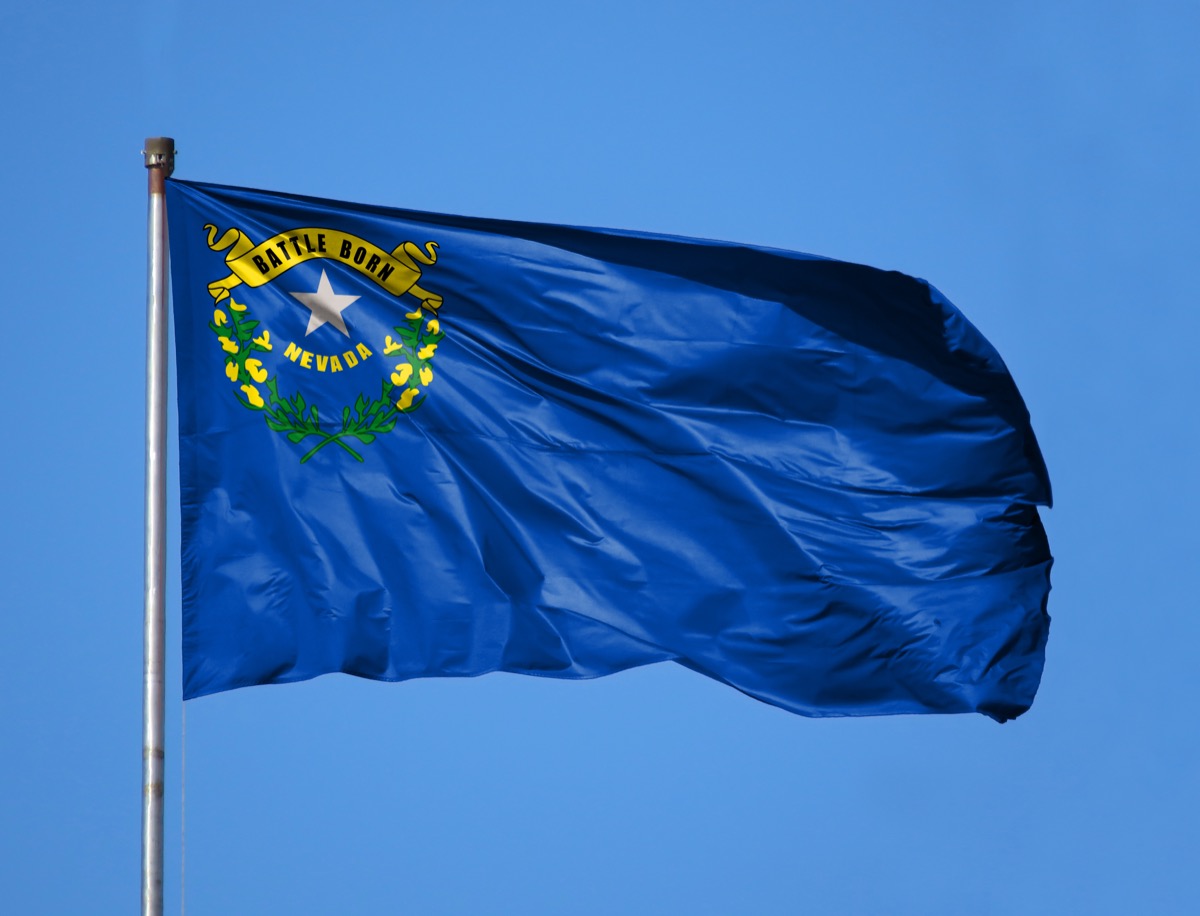
The phrase “Battle Born” on the Nevada state flag refers to the fact that Nevada became a state during the Civil War. And the silver star underneath it is a reference to its nickname: the Silver State.
29
New Hampshire
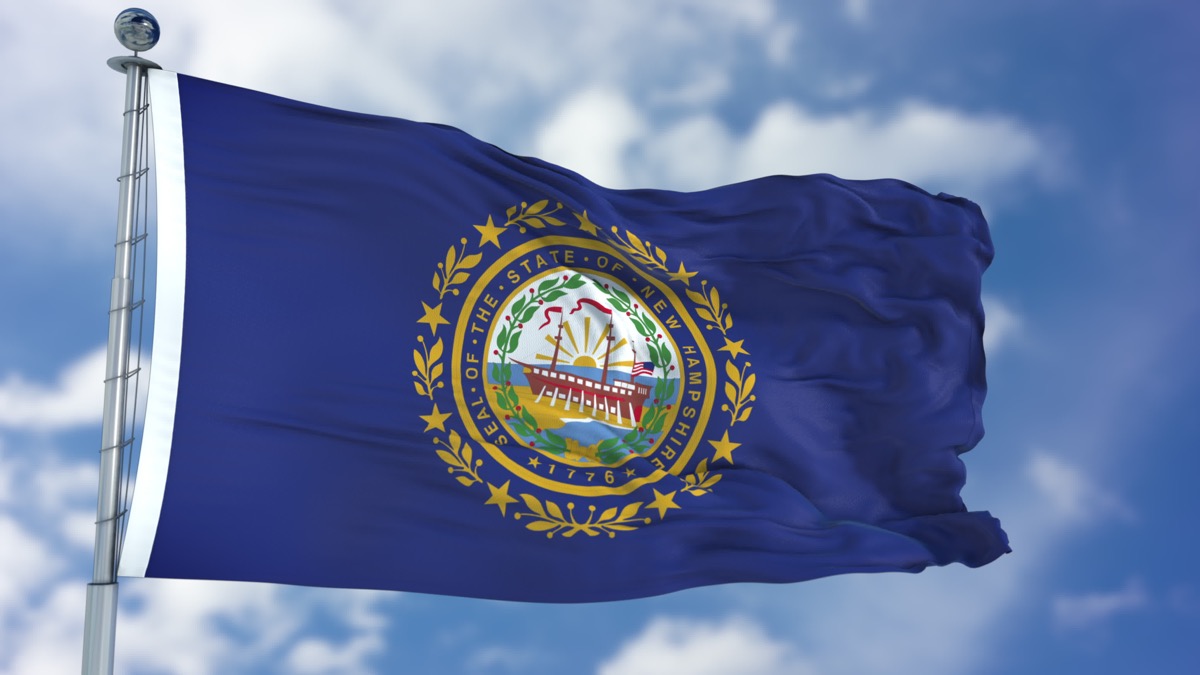
The ship that’s front and center on the New Hampshire state seal and state flag is the U.S.S. Raleigh. The Raleigh is said to be the first ship to fly the American flag, according to the Concord Monitor.
30
New Jersey
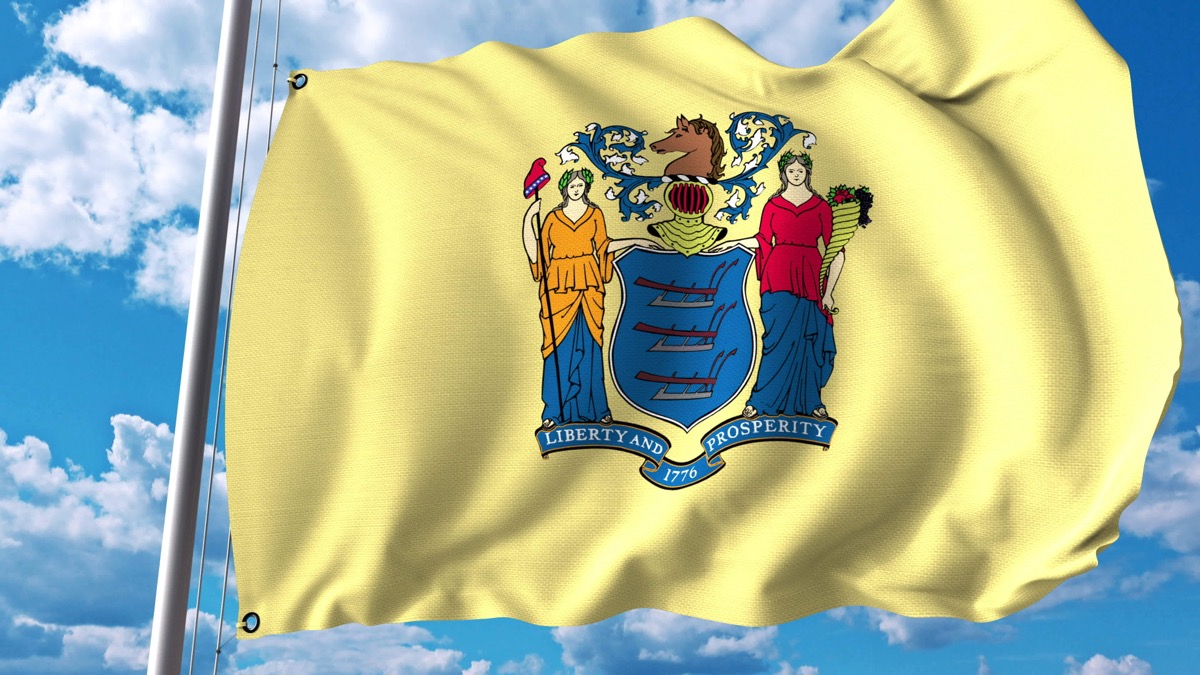
The buff color on the background of the New Jersey state flag was used by the New Jersey troops during the Revolutionary War. The color was chosen by George Washington in 1779 when he was headquartered in the state, according to the official website of New Jersey.
31
New Mexico
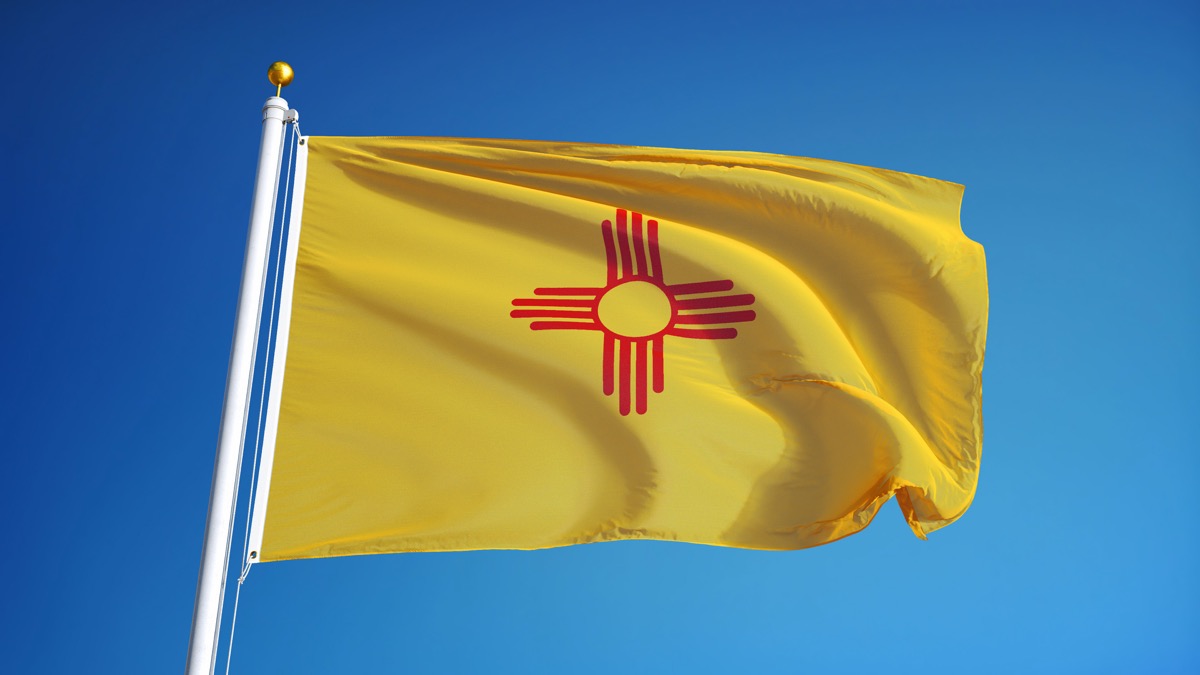
The red object on New Mexico’s state flag is called the Zia sun symbol, which the Zia Native American tribe used to represent the four times of day (morning, noon, evening, night), the four seasons of the year, the four points on the compass, and the four seasons of life (childhood, youth, middle age, and old age).
32
New York
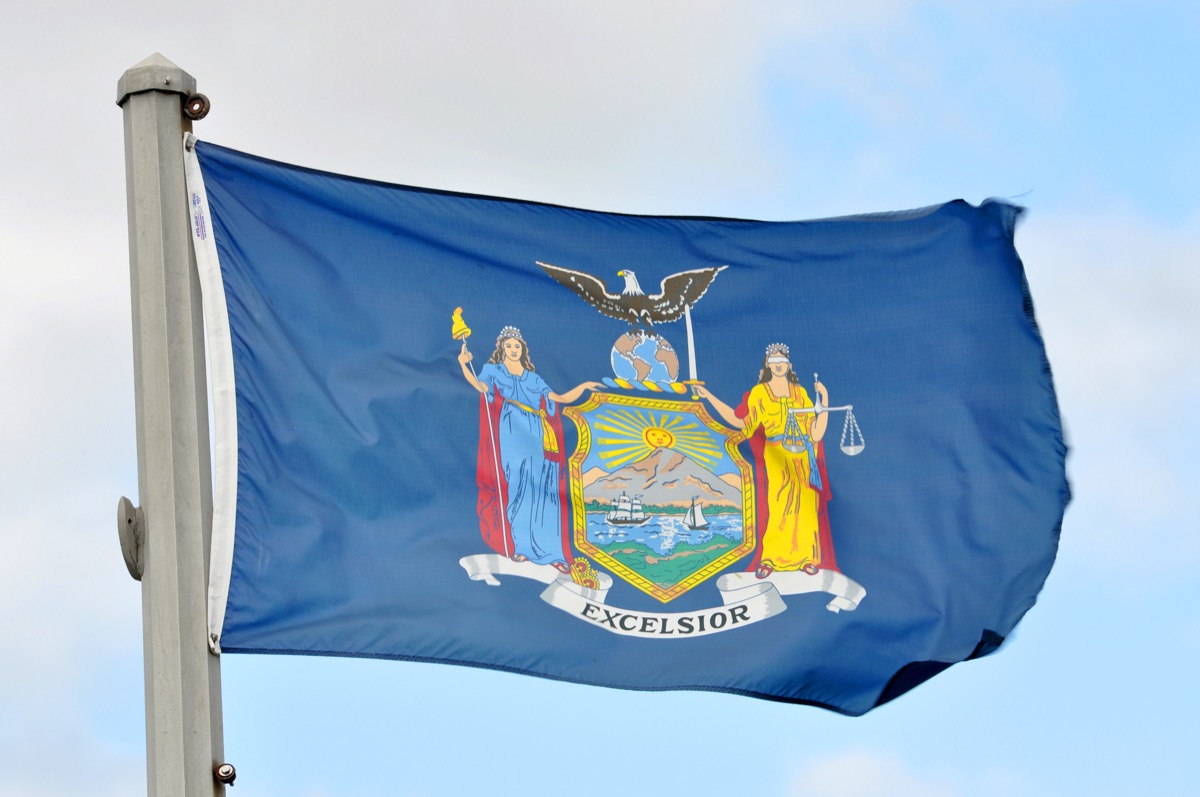
The image of the eagle on the New York state seal faces west to symbolize New York’s economic and commercial bridge between the East and the West, the old world and the new, according to the state’s website.
33
North Carolina
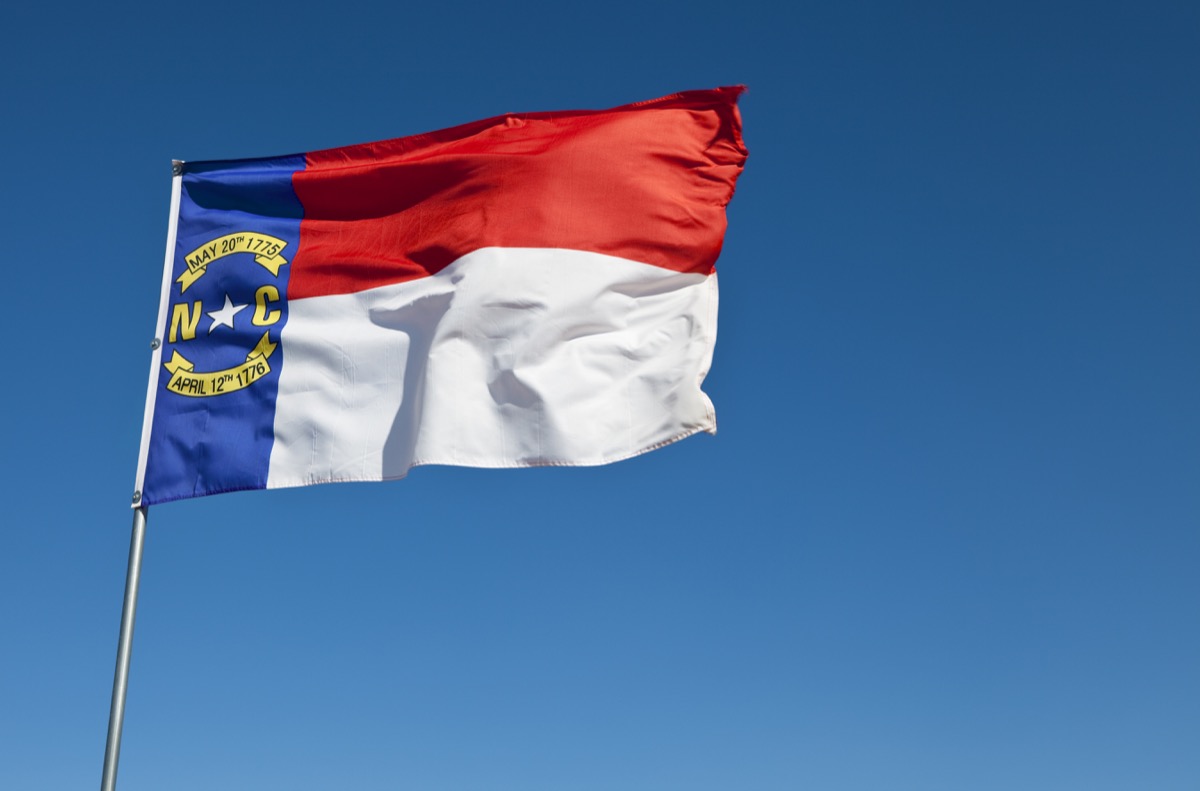
The date emblazoned on the North Carolina state flag— May 20, 1775—marks when the Mecklenburg Declaration of Independence was signed. Similar to the American Declaration of Independence, the Mecklenburg Declaration of Independence was a document allegedly signed by a committee of citizens in Mecklenburg County (a county in North Carolina) who were intent on declaring themselves independent of British rule after the Battle of Lexington, according to local television station ABC 11.
The only problem with this document? There is no proof that it actually exists—or that the meeting in Mecklenburg County ever took place. So, according to many scholars, the date on the North Carolina flag is potentially completely false. Meanwhile, the April 12, 1776 date represents the day of the Halifax Resolves, the resolution adopted by North Carolina calling for the removal of the British from their state.
34
North Dakota

The final design of the North Dakota state flag was inspired by the regimental flag carried by the North Dakota Infantry in the Spanish-American War in 1898 and the Philippine Island Insurrection in 1899, according to State Symbols USA. The only difference between the two flags is the addition of the state’s name on the red scroll.
35
Ohio
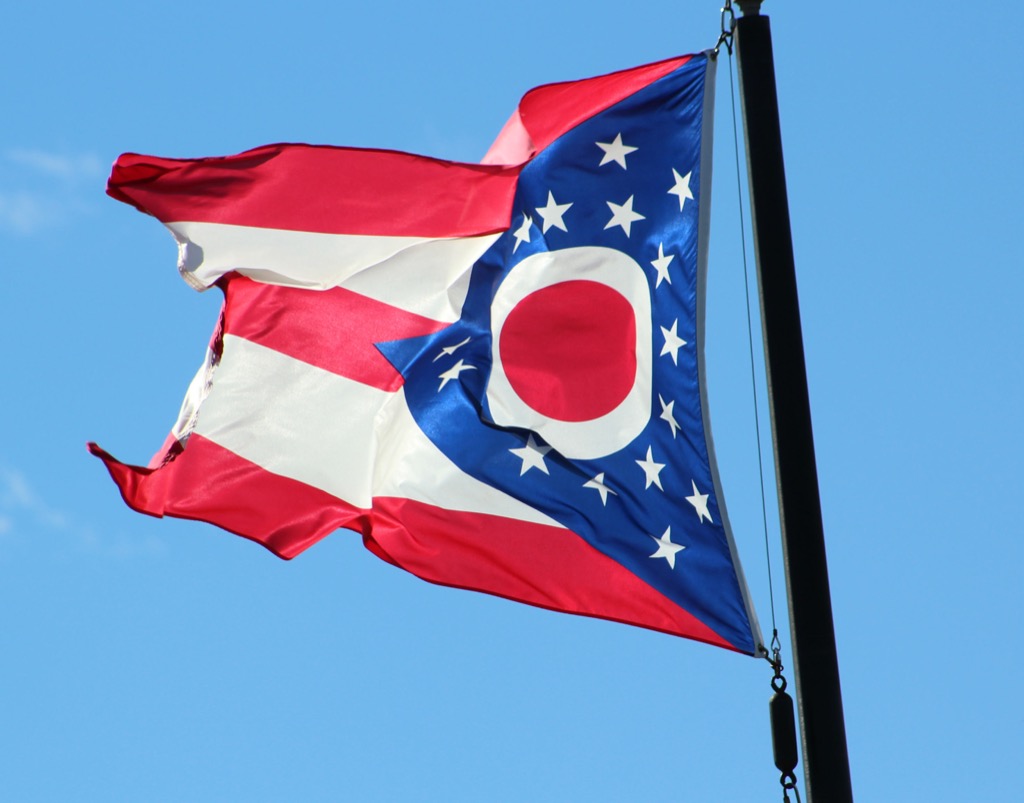
Ohio is the only state to have a flag that isn’t a rectangle. Instead, it uses a swallow-tailed burgee (a flag with a V-shape cut), according to Ohio Secretary of State Frank Larose.
36
Oklahoma
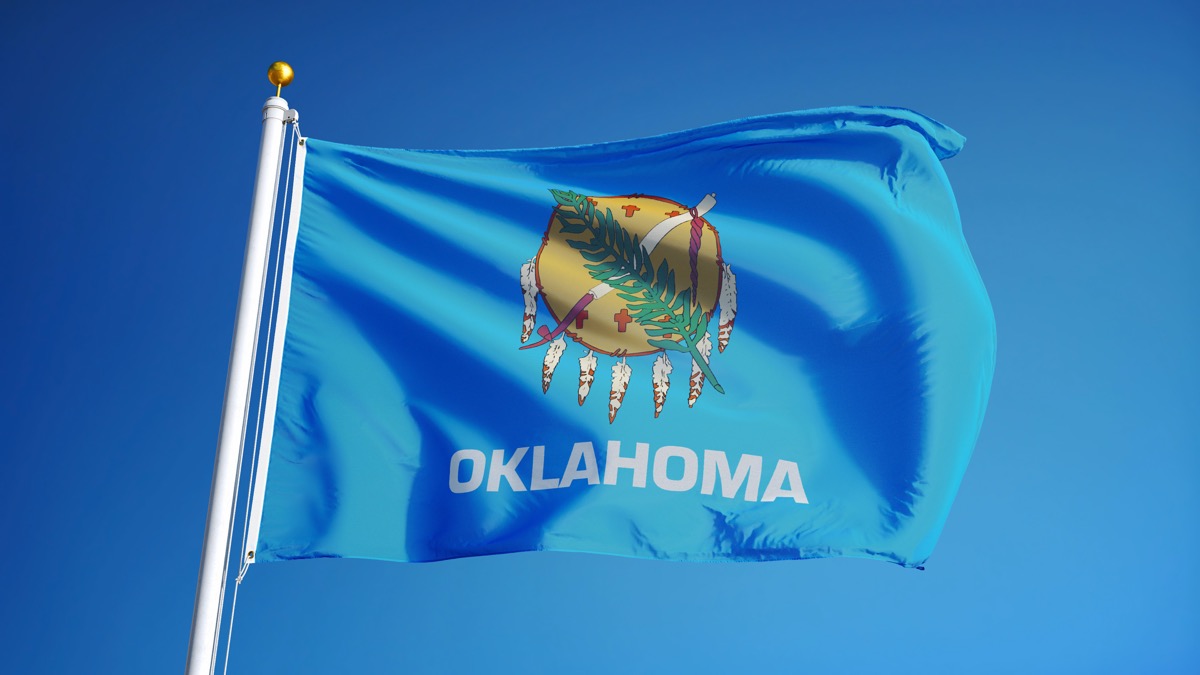
The Oklahoma state flag’s depiction of its Native American heritage is one of peace and positivity. According to the Oklahoma Historical Society, the state flag features an Osage Native American warrior’s shield underneath an olive branch and a peace pipe, symbolizing the peace between the European settlers and Native Americans who both inhabited the land.
37
Oregon
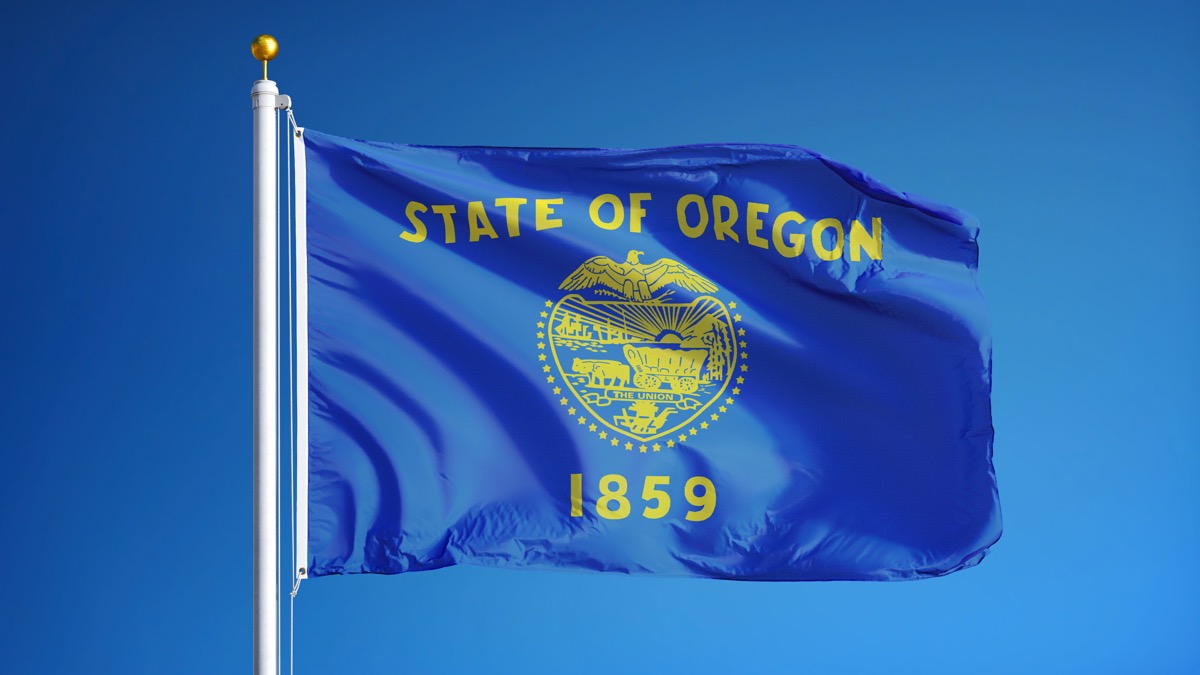
The Oregon state flag is the only one that has a front and a back. The reverse side includes an image of the state animal, the beaver.
38
Pennsylvania
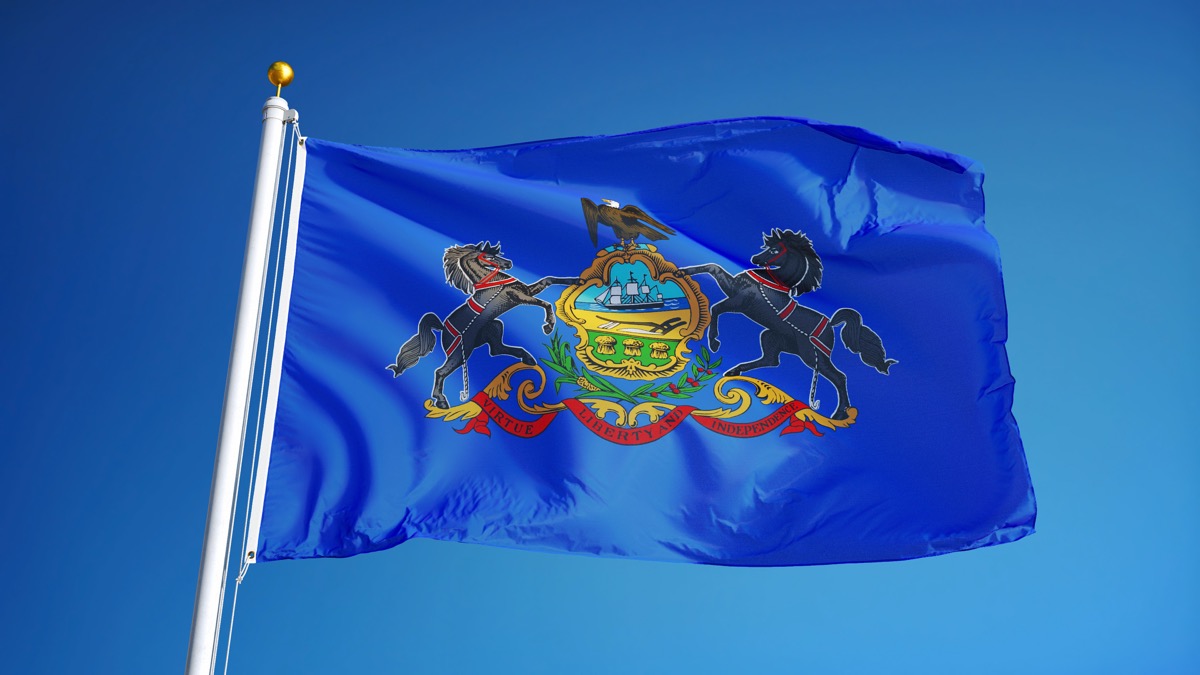
According to the U.S. Department of Veteran’s Affairs, Pennsylvania was the first state in America to establish June 14th as Flag Day. To this day, the state is the only one to recognize Flag Day as a legal holiday, allowing employees to enjoy a day off to celebrate the national flag.
39
Rhode Island
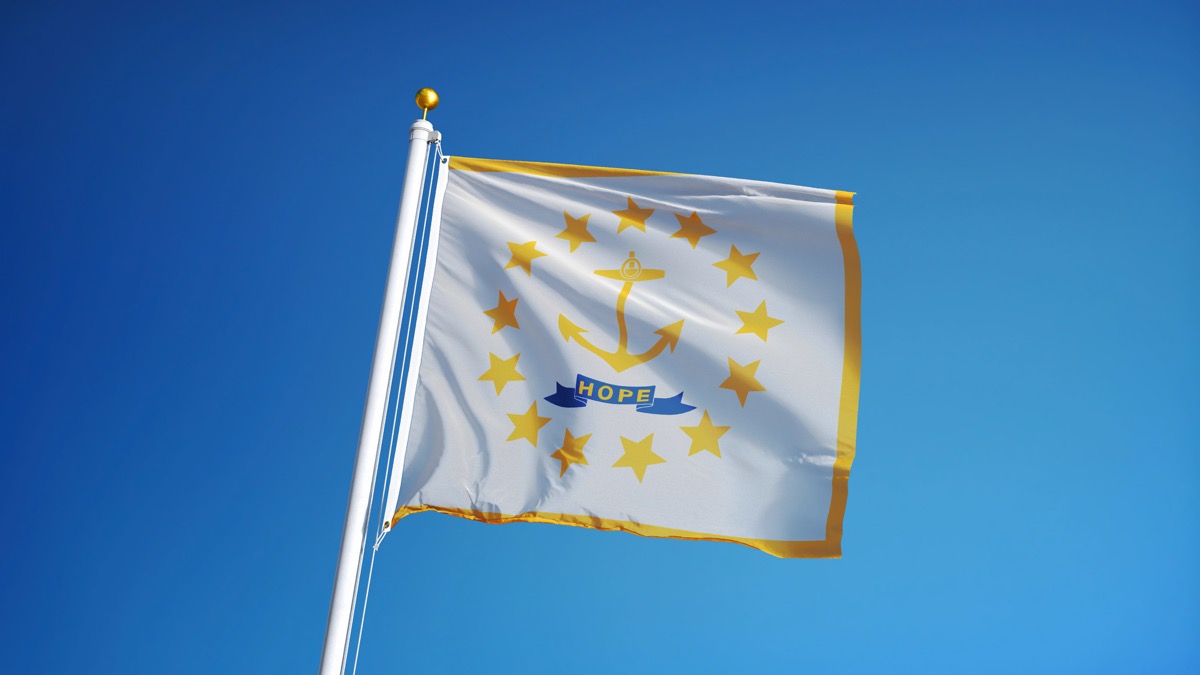
The word “hope” on the Rhode Island state flag is likely in reference to the biblical phrase, “hope we have as an anchor of the soul,” found in Hebrews, 6:18-19, according to the Rhode Island government.
40
South Carolina
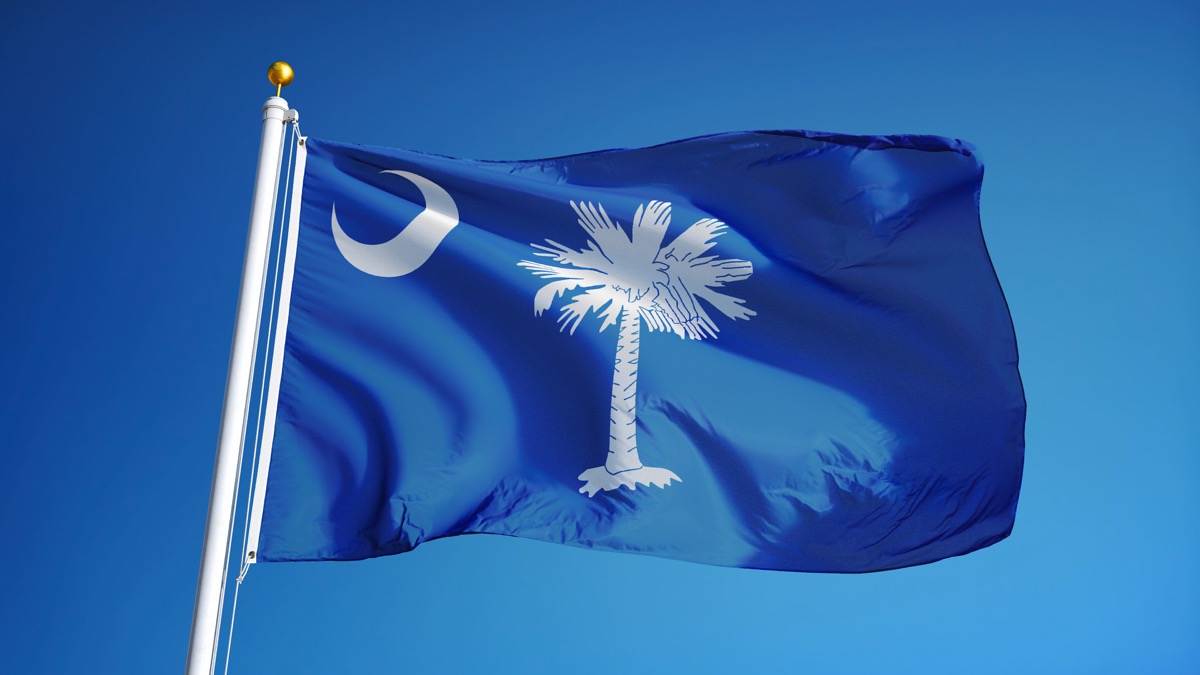
The state flag of South Carolina is one of the oldest in the United States, having been around in some form since 1775, according to State Symbols USA. The crescent symbol present represents the silver emblem worn on the caps of South Carolina troops during the Revolutionary War.
41
South Dakota

The South Dakota state flag features its state seal, which shows a riverboat, a farmer, and wheat fields, according to South Dakota Magazine.
42
Tennessee
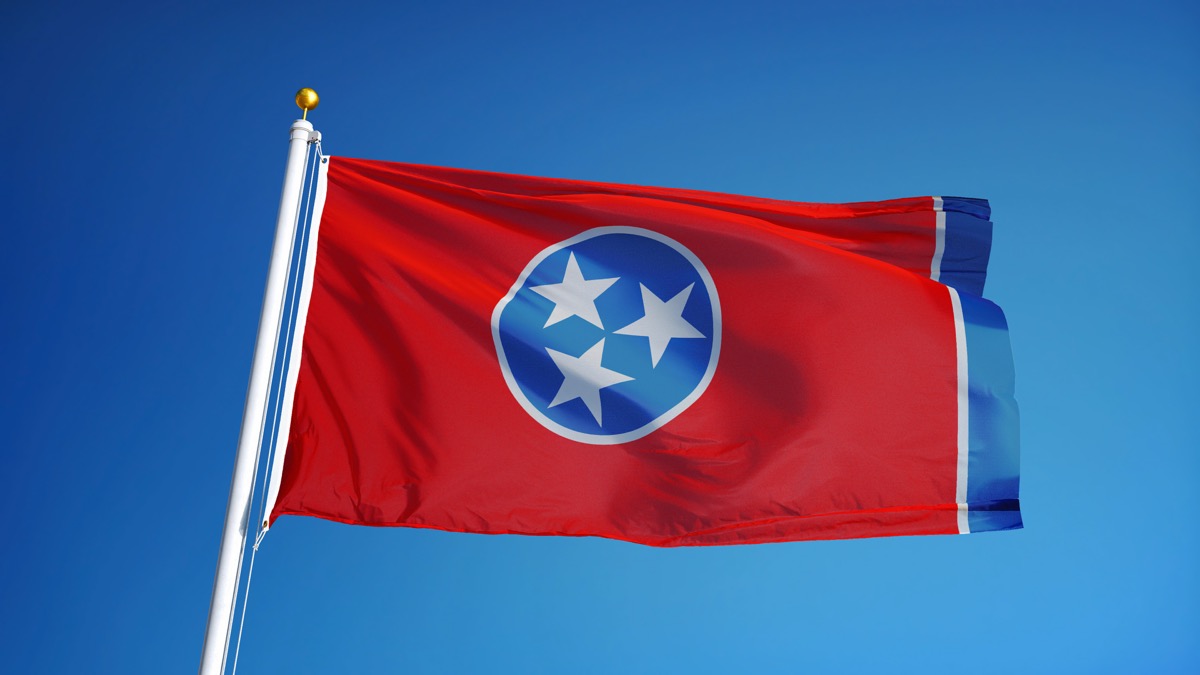
The three stars on Tennessee’s state flag are symbols of unity and represent the three different geographical parts of the state: East Tennessee, Middle Tennessee, and West Tennessee, according to Tennessee Secretary of State Tre Hargett.
43
Texas
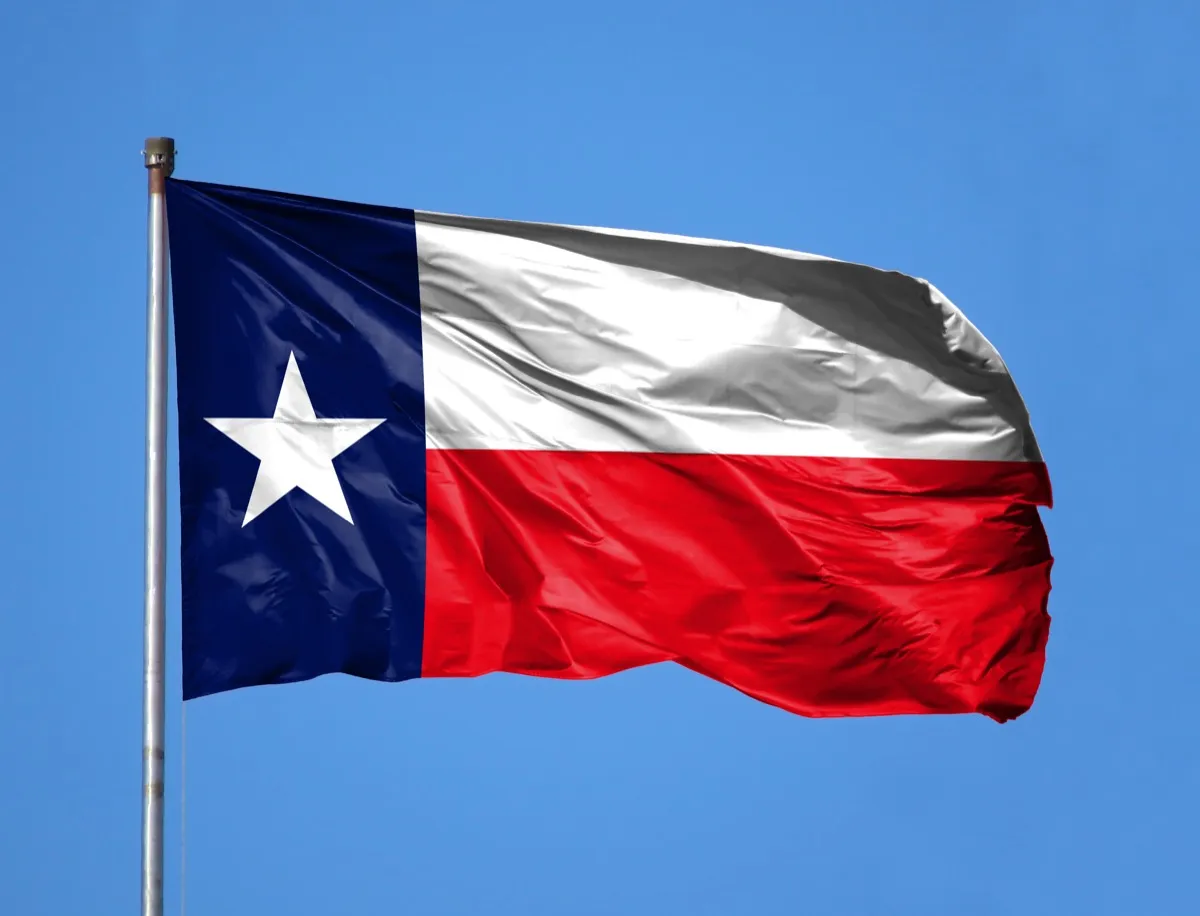
For public displays and official events, the state of Texas waves all six flags of the places that have ruled over it at some point: the flags of France, Spain, Mexico, the Republic of Texas, the Confederate States of America, and the United States. And of course, the state flag of Texas proudly includes the famous Lone Star.
44
Utah
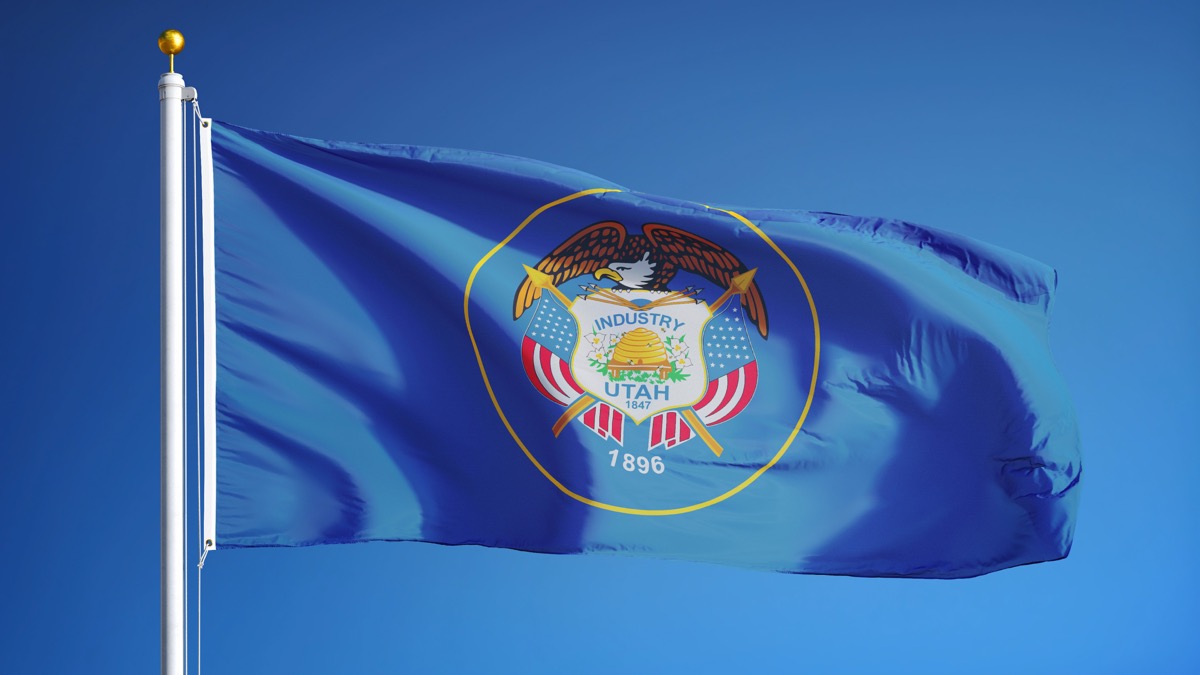
You might notice that there are two years printed on the state flag of Utah—1896, which refers to the year that Utah became a state, and 1847, they year the Mormons first settled in Utah, according to the Utah State Library.
45
Vermont
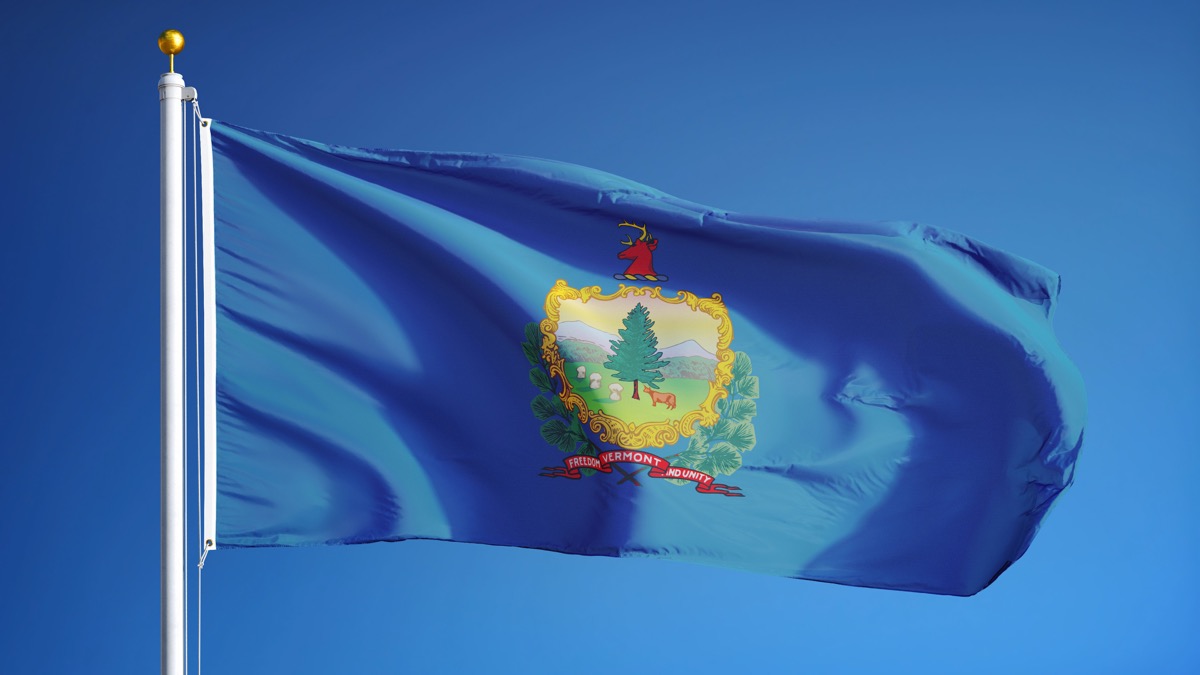
According to the state’s statutes, only the active secretary of state is allowed to distribute Vermont’s state flag, which features the state’s coat of arms—depicting a serene landscape with tall mountains and wildlife.
46
Virginia
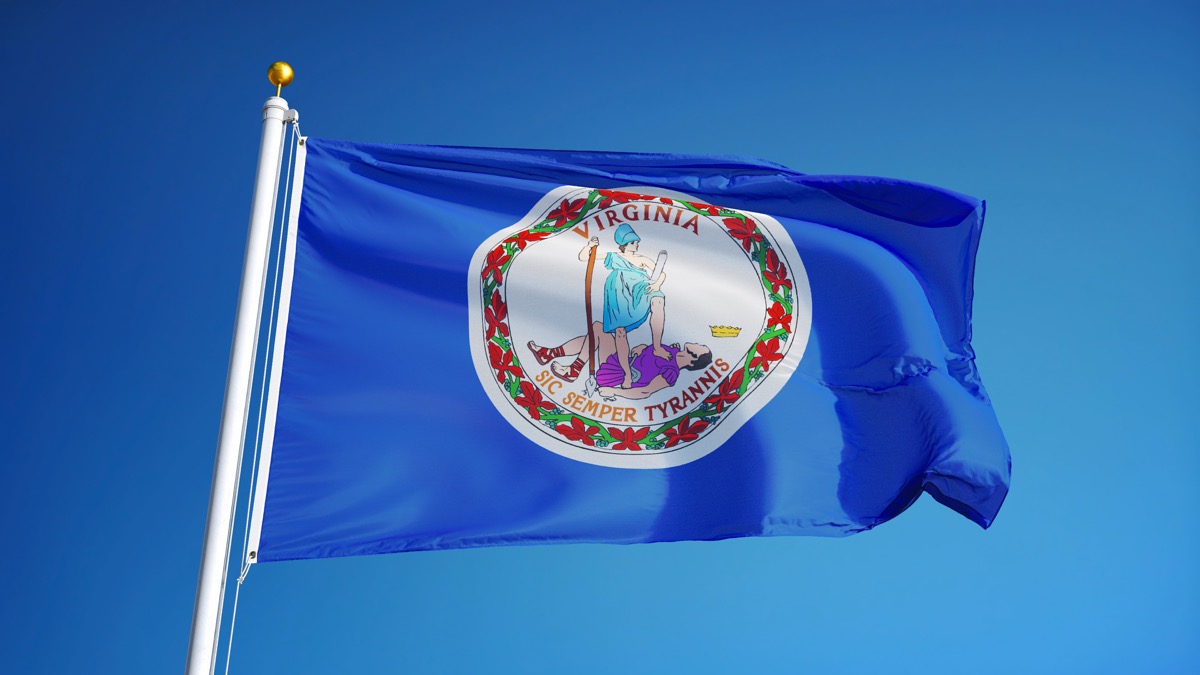
The state seal present on Virginia’s flag is somewhat scandalous. According to C-VILLE, an alternative newsweekly based in Charlottesville, Virginia, if you look closely at the state flag, you’ll see that Virtus, the Roman goddess of bravery and strength, is standing over a foe with her left breast partially exposed.
47
Washington
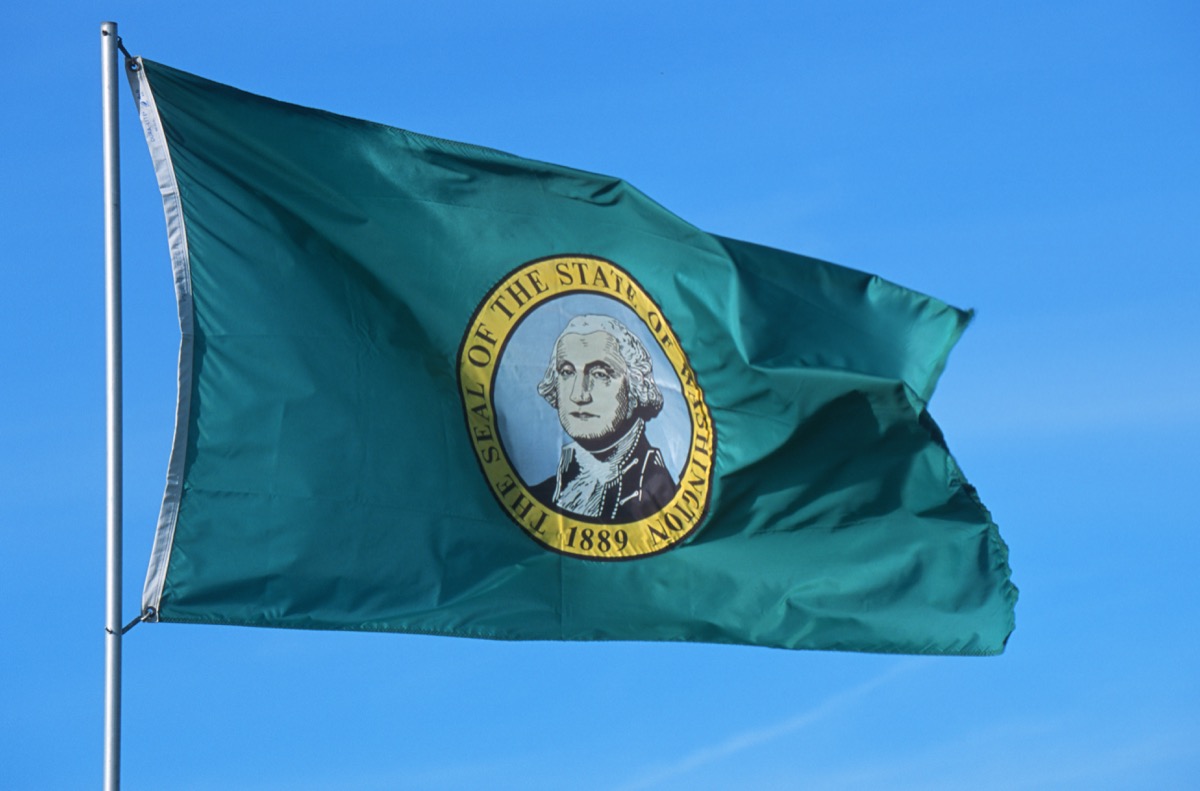
As an ode to its namesake, the state of Washington used painter Gilbert Stuart’s famous portrait of George Washington to adorn its state flag.
48
West Virginia
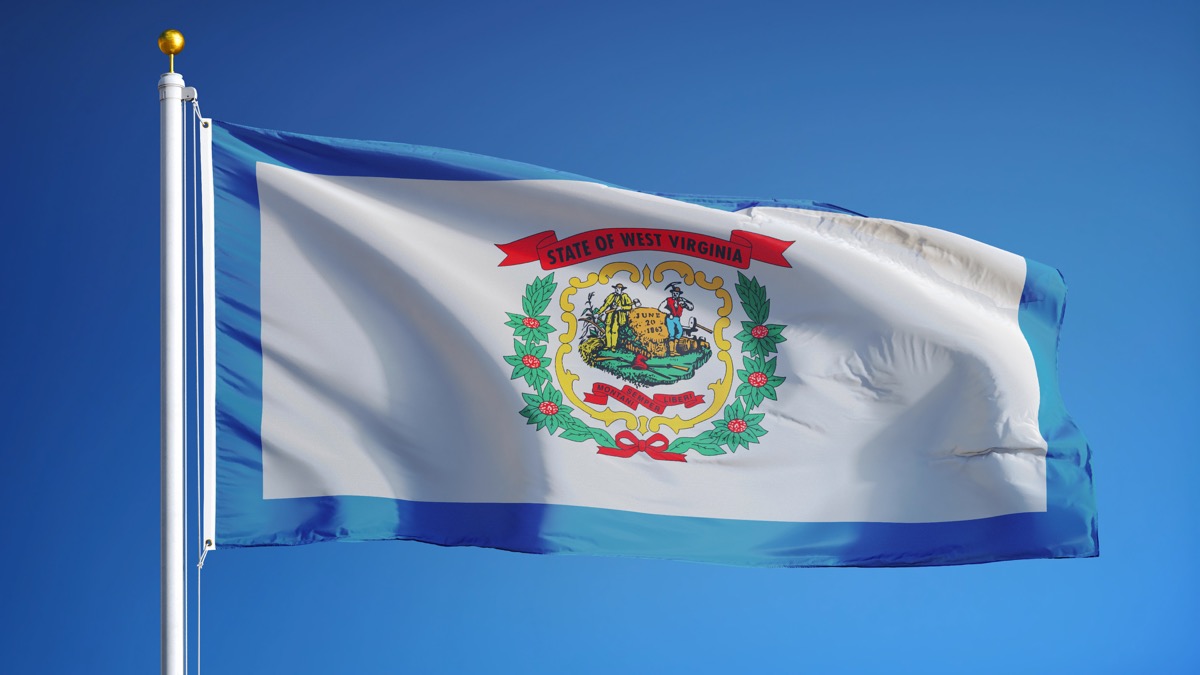
When translated from Latin to English, the state motto on West Virginia’s flag stands for “Mountaineers are always free.”
49
Wisconsin
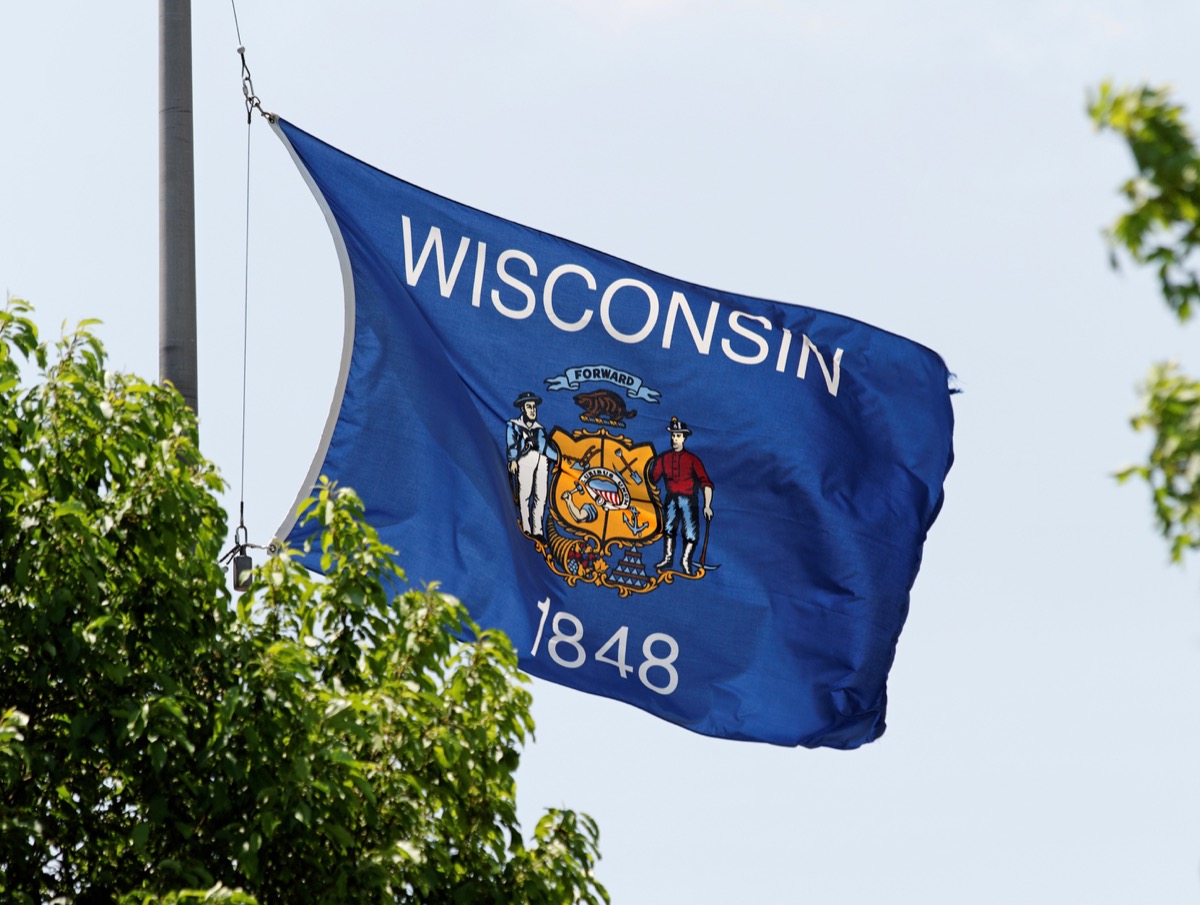
According to the Wisconsin Green Schools Network, the state flag contains items important to the Wisconsin workforce at the time of the flag’s adoption in 1863. The plow represents agriculture, the pick and shovel represent mining, the arm and hammer represent manufacturing, and the anchor represents navigation.
50
Wyoming
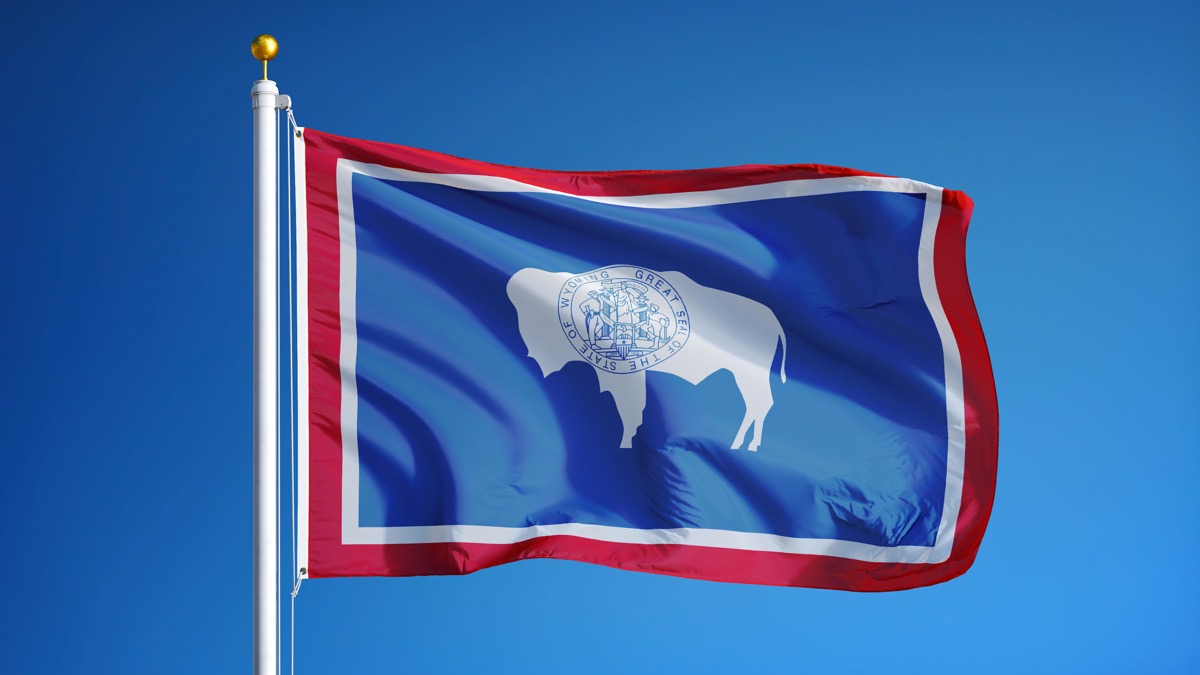
In the original Wyoming flag design, the bison depicted faced away from the flagpole, symbolizing its freedom to roam the plains of the state. However, before the flag’s design could be finalized, Daughters of the American Revolution member Grace Raymond Hebard suggested that the bison would look better facing the flagpole. Since then, the state creature has done just that. And for more interesting facts about your home state, This Is the Most Common Street Name in Every State.
To discover more amazing secrets about living your best life, click here to follow us on Instagram!